Dietary supplements guide Spring 2024

Complementary and alternative medicine (slideshare.net)
Created by the students in PHPR 48900 Complementary and Alternative Medicine, Purdue University
This assignment for the course was comprised of creation of individual topic monographs, peer review of monographs, and submission of final draft after receiving feedback from peers.
Compiled
by
Cynthia P. Koh-Knox Sharp, PharmD, RPh Clinical Associate Professor, College of Pharmacy, Purdue University
Dietary supplements guide Topic (Author) Page 5-HTP (Stephanie Hessong) ................................................................................................................................. 3 Acai (Carly Lin) ..................................................................................................................................................... 5 Ashwagandha (Camille Kugler) 7 Asian ginseng (Cole O’Connor) 9 B vitamins (Janki Bhavsar) ................................................................................................................................. 11 Black cohosh (Cameron Buschkoetter) ............................................................................................................. 13 Blueberry (Justin Wang) 15 Cannabidiol (Levi Reno) 17 Chamomile (Janeen Dahouk) ............................................................................................................................ 19 Chondroitin (Gunnar Johnson) .......................................................................................................................... 21 Chromium (Grace Garland) 23 Cinnamon (Sarah Hauser) ................................................................................................................................. 25 Cranberry (Maddy Packer) ................................................................................................................................ 27 Creatine (Madeline Connors) ............................................................................................................................ 29 Devil’s claw (Karen Robles-Garcia) 31 DHA (Khoa Thai) ................................................................................................................................................ 33 Dong quai (Megan Fuchs) ................................................................................................................................. 35 Echinacea (Jeffrey Du) 37 Evening primrose (Alvin Zhu) 39 Feverfew (Hao Huang) ...................................................................................................................................... 41 Flaxseed (Rebecca Lui) ...................................................................................................................................... 43 Garcinia cambogia (Anh Trinh) 45 Garlic (Alex Ungureanu) 47 Ginger (Aayush Vachharajani) ........................................................................................................................... 49 Glucosamine (Ploy Rucha-Intra) ........................................................................................................................ 51 Goldenseal (Alex Doruelo) 53 Grape seed (Ashleigh Griffin) 55 Horny goat weed (Nicole Wasyliw) ................................................................................................................... 57 Kava kava (Allison Casey) .................................................................................................................................. 59 Mate de coca (Jackson Gum) 61 Melatonin (Shelbi Cannon) 63 Omega-3/omega-6 Fatty acids (Andrew Lacey) ................................................................................................ 65 Prebiotics/probiotics (Adia Ngo) ....................................................................................................................... 67 SAMe (Gaby Clark) 69 Saw palmetto (Casey Coronel) 71 Selenium (Jonah Lenters) .................................................................................................................................. 73 St. John’s wort (Ainsley Rodrick) ....................................................................................................................... 75 Stevia (Amanda Reader) 77 Turmeric (Grace Ramey) 79
5-HYDROXYTRYPTOPHAN
StephanieHessong,StudentPharmacist

\https://www.amazon.com/Nature-Made-Chewable-Support-
Pharmacology
Tryptophan is converted to 5HTP in the body then converted to serotonin which regulates mood, anxiety, appetite, and pain (1)
Background
5-hydroxytryptophan(5-HTP)isanaturally occurringchemicalinthebodyderivedfromthe aminoacidtryptophanthatcomesfromfood 5hydroxytryptophanisconvertedintoserotonin andisknowntoraiseserotonininthebrainwhich regulatesmoodandbehavior 5hydroxytryptophansupplementsaremadefrom seedsofaplantcalledgriffoniasimplicifolia.(1)
ScientificName
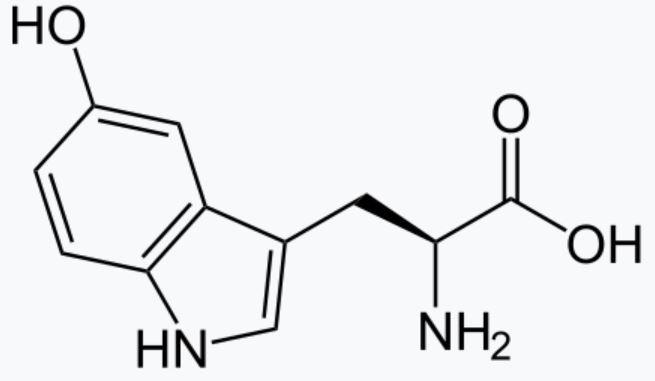
wikipedia org/wiki/5-Hydroxytryptophan
Common Uses
is often taken in doses of 150800mg daily.
Doses of 6-10 grams daily can cause serious side effects and should be avoided (2)
3 5-HTP
Spring2024
Supplement/2188960777393&psc=1&mcid=dfe2effd1ffe34fabe58e57f81 008d23 Depression Fibromyalgia Insomnia Migraines Obsessive Compulsive Disorder Obesity(1)
Available
Typical
5-HTP 5-hydroxytryptophan
Tablets
https://en
Dosing Forms
Serving
L-5-hydroxytryptophan
(1)
According to Medline Plus, 5-HTP can take 612 weeks to work and is possibly effective for improving symptoms of depression and can be just as effective as some prescription antidepressant medications. (2)
According to Lexicomp, 5-HTP use for any health problem is not supported by medical studies (3)
Drug Interactions Effectiveness Toxicities
Liver Toxicity
Brain Toxicity
Eosinophilic Myalgia Syndrome: Fatal disorder affecting the skin, blood and muscles(1)
Side Effects
Upset stomach
Heartburn
Gas
Feeling of fullness
Sleepiness
Feeling dizzy (3)
Safety
Avoid use during pregnancy and breastfeeding due to insufficient data
Stop taking two weeks before surgery (2)
AVOIDcombinationwith5-HTP:
Escitalopram
Fluvoxamine
Paroxetine
Fluoxetine
Sertraline
Phenelzine
Article Summary
5-HTP as an Adjuvant therapy in treatment of moderate in Treatment of Moderate to Severe Obsessive Compulsive Disorder (OCD)
This article consists of a 12 week double blind, placebo controlled, study conducted on 60 patients with moderate to severe OCD. Patients were assigned to receive Fluoxetine with 5-HTP or Fluoxetine with placebo. Symptoms were assessed using a rating scale at weeks 4, 8, and 12. The results showed that the patients taking the medication combination with 5-HTP had a higher treatment response than participants that took fluoxetine alone. This study suggests that there may be a benefit for use of 5-HTP in combination with fluoxetine for treatment of OCD symptoms. (4)
Professional Opinion
I would not recommend the use of 5-HTP because its use and effectiveness have not been proven by medical studies. I would caution others to avoid this supplement due to its numerous drug interactions, toxicities, and side effects.
- S. Hessong
References
Mount Sinai. 5-Hydroxytryptophan (5-HTP) Accessed February 23, 2024. https://www.mountsinai.org/health-library/supplement/5hydroxytryptophan-5htp#:~:text=5%2Dhydroxytryptophan%20(5%2DHTP)%20is%20a%20chemical%20that,relays%20signals%20between%20brain%20cells). 1 Natural Library of Medicine. 5-HTP. Published September 14, 2023. Accessed February 23, 2024. https://medlineplus.gov/druginfo/natural/794.html 2 5-Hydroxytryptophan. Lexi-Drugs. Wolters Kluwer Health, Inc. Riverwoods, IL. Accessed February 23, 2024. https://online-lexi-com.
4
Yousefzadeh F, Sahebolzamani E, Sadri A, et al. 5-Hydroxytryptophan as adjuvant therapy in treatment of moderate to severe obsessivecompulsive disorder: a double-blind randomized trial with placebo control. Int Clin Psychopharmacol. 2020;35(5):254-262. doi:10.1097/YIC.0000000000000321
3
Citalopram
Nortriptyline Imipramine Oxidase inhibitors Nefazodone Tramadol Carbidopa(1)
Scientific Name: Euterpe Oleracea
Common Names: Acai palm, Acai Berry
Background/ History
The açaí berry comes from the açaí palm tree, which is known for its cultivation of deep purple berries Indigenous tribes in the Amazon rainforest have consumed it for centuries. It gained popularity due to its high antioxidant content and other potential health benefits, including enhanced skin health and support for weight loss. Açaí bowls and beverages became trendy in health food circles worldwide. Today, it is commonly used in smoothies, bowls, and supplements, touted for its energy-boosting and antioxidant properties.
Purpose and Common Uses
Weight-loss
Anti-aging
Anti-cancer properties
Increase HDL (good cholesterol) and
Decrease LDL (bad cholesterol)
Heart health
Promote healthy skin
Boost brain function
Antioxidant
Manage blood sugars
Constipation
Dosage Forms
Berry fruit (fresh, frozen, dried)
Powder
Liquid (juice, smoothie, drink)
Capsule
Tablets
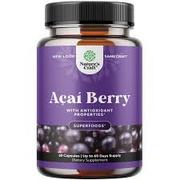
How does it work in the body?
Açaí berries are rich in antioxidants, particularly anthocyanin, which are compounds know for their potential health benefits. These antioxidants help neutralize harmful free radicals in the body, reducing oxidative stress and inflammation, which are linked to various chronic diseases They also contain other nutrients like vitamins, fiber and minerals, which contributes to overall health and well-being.
Dosing / Serving Size
100-200 grams/day (varies based on form)
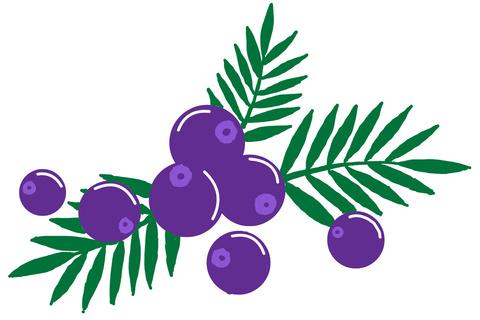

Carly Lin Student Pharmacist Spring 2024
AAÇAÍ ÇAÍ
https://www.freepik.com/free-photo/muesli-with-fruits-served-bowlbright-background-healthy-eatingconcept_64866718.htm#fromView=search&page=2&position=0&uuid =4472354a-6a32-43bb-ae62-177d1641a452 https://www.amazon.com/Pure-Acai-BerryPills-Concentrate/dp/B01MRJOPG7
Effectiveness
While açaí are rich in antioxidant and nutrients, scientific evidence supporting their specific health benefits is still limited and mixed While they may offer some advantages, more research is needed to understand their full effectiveness.
Side Effects
Does not have any harmful side effects if consumed in moderate amounts
Consuming excessive quantities could cause possible risk of upset stomach diarrhea nausea headaches blurry vision
Interactions
Açaí does not have any known severe drug interactions when consumed with other drugs or foods

"https//wwwfreepikcom/free-vector/aca-berriesdesgn 137585879htm#fromView search&page 1&positon 0&uuid 548529 bd-b55d-4325-ae77-500b8edef0c0 >magebygstudomagenon Freepk</a>
Safety
/ Warnings / Toxicities
The consumption of açaí is generally considered safe and a natural berry product
May be toxic in very high doses but minimal research has been done
Article Summary
A study, by E Sadowska-Krępa, investigated the effects of açaí berry-based juice blend consumption on junior athletes While it did not improve their sprint performance it did significantly boost antioxidant levels, improved lipid profiles, and reduced exerciseinduced muscle damage. The juice blend's high polyphenol content likely contributed to these benefits. Based on the results of the study it is suggested that regular consumption of açaí may offer health advantages, particularly in terms of antioxidant and hypocholesterolemic activities.
Personal Opnion
Açaí seem to be safe to consume, especially in its natural form and in moderation. They could be a good addition to any well-balanced diet as it can provide benefit in their overall health. For example cognitive health, heart heath, weight-loss, and so much more It does not seem like there are major interactions when using açaí products and it a pretty affordable way to supplement one ’ s over all health. - C. Lin
RefErences
Sadowska-Krępa E, Kłapcińska B, Podgórski T, Szade B, Tyl K, Hadzik A Effects of supplementation with acai (Euterpe oleracea Mart ) berry-based juice blend on the blood antioxidant defence capacity and lipid profile in junior hurdlers A pilot study Biol Sport 2015;32(2):161-168 doi:10 5604/20831862 1144419
Jennings KA. 5 impressive health benefits of acai berries. Healthline. Published May 31, 2017. https://www.healthline.com/nutrition/benefits-of-acai-berries
Acai: Uses, Side Effects, Interactions, Dosage, and Warning. www.webmd.com. https://www.webmd.com/vitamins/ai/ingredientmono-1109/acai
Acai Berries and Berry Juice: Are There Health Benefits? WebMD. https://www.webmd.com/diet/acai-berries-and-acaiberry-juice-what-are-the-health-benefits
Ashwagandha
Camille Kugler Student Pharmacist Spring 2024
Scientific Name1: Withania Somnifera
Background1:
Common Name1: Indian Ginseng
Ashwagandha is a shrub found in India, Africa, and the Middle East and has been used for a while in Ayurvetic medicine. It contained withanolides which can have anti-inflammatory and antioxidant eIects.
Uses2:
1. Ease stress and anxiety
3. Reduce inflammation
5. Improve memory
7. Anti-aging properties
Mechanism of Action3:
2. Normalize cortisol levels
4. Reduce cancer risk
6. Improve immune function
Ashwagandha has many eIects on the body. It suppresses stress induced increases of dopamine receptors in the brain. Ashwagandha also reduces stress induced increases in plasma corticosterone, BUN, and blood lactic acid.
Dosage Forms:

E>ectiveness:


Natural Medicines states that ashwagandha is possible eIective for generalized anxiety disorder (GAD), insomnia, and stress.3
The recommended length of treatment for GAD is 1 g daily by mouth for 6 weeks.3
The recommended length of treatment for insomnia is 600 mg daily by mouth for 8 weeks.3
The recommended length of treatment for stress is 350 mg of root extract by mouth twice daily for 30 days.3
Safety:
Ashwagandha has seemed to be safe in doses up to 1250 mg for up to 6 months.3
It is most likely not safe for pregnancy but there is not much evidence about the safety in lactation.3
Warnings:
Powder
Capsules4 Paste4 5. 6. 7
4
There is no current evidence to support the use for the treatment of COVID 19 or to relieve symptoms.3
Adverse E>ects:
Ashwagandha is typically well tolerated.3
Common3
- GI upset3
- Nausea, vomiting, diarrhea3
Drug Interactions:
Toxicities
- Liver abnormalities3,4
- Hepatic encephalopathy3
- Need for liver transplant3
- CNS and respiratory depression4
Ashwagandha has moderate interactions with antidiabetic medications, antihypertensives, benzodiazepines, CAN depressants, immunosuppressants, and thyroid hormone. These drug combinations are not contraindicated.
Contraindications:
Pregnancy4
Hypersensitivity to ashwagandha4
Professional Opinion:
Ashwagandha is possibly eIective for a few diIerent GAD, insomnia, and stress. While there is not a lot of scientific evidence about the use of ashwagandha, some individuals have found it helpful. In my personal opinion, I would not recommend ashwagandha to patients as I am not confident in its ability to improve the listed conditions, but I also do not think it would be harmful to patients who are interested in trying it.
~ C. Kugler
References:
1. U.S. Department of Health and Human Services. Ashwagandha. National Center for Complementary and Integrative Health. Updated March, 2023. Accessed February 24, 2024. https://www.nccih.nih.gov/health/ashwagandha#:~:text=Background,anti%2Dinflammatory% 20and%20antioxidant%20eIects
2. Cleveland Clinic. Benefits of Ashwagandha and How Much to Take. Health Essentials. Published October 16, 2022. Accessed February 24, 2024. https://health.clevelandclinic.org/what-is-ashwagandha
3. A shwagandha. NatMed. Accessed April 8, 2024. https://naturalmedicinestherapeuticresearch- com.eu1.proxy.openathens.net/
4. Ashwagandha. Lexi-Drugs. Lexicomp. Wolters Kluwer Health, Inc. Riverwoods, IL. Accessed August 24, 2016. http://online.lexi.com
5. 23 Astonishing Ashwagandha Benefits For Men Backed By Science. Man Matters. Accessed April 8, 2024. https://manmatters.com/blog/ashwagandha-benefits-for-men-3/
6. When is the Best Time to Take Ashwagandha – Morning or Night? Good Housekeeping. Accessed April 8, 2024. https://www.goodhousekeeping.com/health/a46000776/when-totake-ashwagandha/
7. 16 Powerful Benefits of Ashwagandha for Health and Beauty. Kama Ayurveda. Accessed April 8, 2024. https://www.kamaayurveda.in/blog/ashwagandha-benefits
GINSENG ASIAN
COLE O’CONNOR STUDENT PHARMACIST
SPRING 2024
SCIENTIFIC NAME: PANAX QUINQUEEFOLIUS L.
BACKGROUND
Asian Ginseng is native to the mountainous regions of East Asia. It is a part of the araliaceae family and has been used as a traditional chinese and korean medicine for centuries. It was widely known for its benefits in vitality and general wellbeing.
COMMON USES
Natural energy booster, enhancing cognitive function, managing stress, supporting sexaull health, supporting immune function, etc
PHARMACOLOGY
Ginseng works in many different molecular pathways and is still not well understood, but there is some activity that we recognize. For adapting to stressors, ginseng is believed to alter the hypothalamicpituitary-adrenal axis by regulating cortisol release. Ginseng is also known for carrying ginsenosides that carry antioxidant properties and reduce free radicals and oxidative stress. (there are a lot more but idk if they fit)
EFFECTIVENESS
There is anecdotal data describing effects being felt as soon as 24 hours. Evidence of ginseng being effective is lacking.
DOSAGE FORMS
Ginseng is typically given in doses of 100-600 mg a day broken up into segments. 200 and 400 are the most common.
SAFETY/TOXICITIES
Hormonal imbalances
Medication
Interactions
Raise in blood pressure
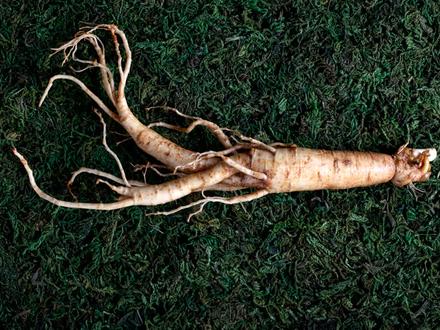
https://wwwmedicalnewstodaycom/articles/262982
ADVERSE EVENTS
Nervousness, insomnia, changes in blood pressure, breast pain, bleeding, vomiting, diarrhea, etc
OPINION
Asian Ginseng is a safe alternative medication, in most patients. I personally don’t believe it is too effective, but it also won’t hurt anyone when used correctly.
INTERACTIONS
Interactions with NSAIDs, corticosteroids, estrogen therapy, MAOis, and drugs that decrease blood sugar levels
ARTICLE SUMMARY
Asian Ginseng is native to the mountainous regions of East Asia. It is a part of the araliaceae family and has been used as a traditional chinese and korean medicine for centuries. It was widely known for its benefits in vitality and general wellbeing.
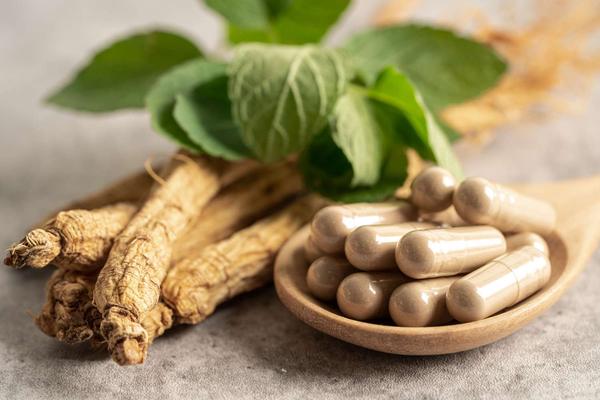
https://wwwmedicalnewstodaycom/articles/2629821
CITATIONS
1
Asian ginseng Information | Mount Sinai - New York Mount Sinai Health System https://wwwmountsinaiorg/health-library/herb/asianginseng
2
3
Asian Ginseng NCCIH Published August 2020 https://wwwnccihnihgov/health/asian-ginseng
Semeco A 7 Proven Health Benefits of Ginseng Healthline Published February 28, 2018 https://wwwhealthlinecom/nutrition/ginseng-benefits
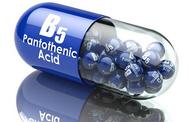
Background
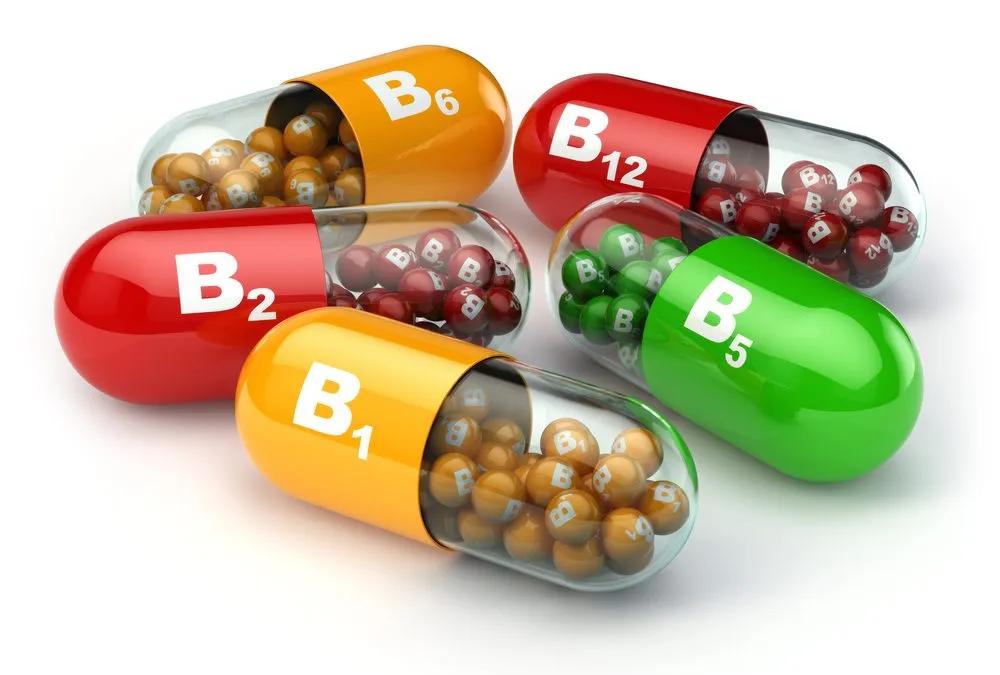
B Vitamins
Janki Bhavsar, Student Pharmacist Spring 2024

In total, the body needs 13 vitamins, and about 2/3 of those aare B vitamins, known as the B-Complex vitamins. These consist of 8 crucial vitamins needed by the body for various metabolic processes such as energy and red blood cell production. The vitamins help ensure the body can produce nutrients such as protein, fat, and carbs. Vitamin deficiencies can lead to underlying disease symptoms such as skin rashes, anemia, fatigue, and weakness.
Apart from suppelements, these vitamins can aalso be found in foods such as beans, leafy vegetables, animal proteins, dairy products, nuts, whole grains, and fruits. However, processed foods tend to have lower levels as the vitamins are destroyed in the process. In general, whole grain foods are more nutritious than white foods.
Vitamin B Type Scientific Name
B1 Thiamin
B2 Riboflavin
B3 Niacin
B5 Pantothenic Acid
B6 Pyridoxine
B7 Biotin
B9 Folate/Folic Acid
B12 Cyanocobalamin
Purported/Common Uses
Pharmacology/Mechanism of Action
The exact mechanism was not to be found; however, the Vitamin B Complex is used to improve energy and mood. Additionally, it has a crucial role in maintaining the health of the immune system, brain, heart, and blood cells.
Dosage Forms
Oral- Tablets, Capsules
Common uses of the B vitamin complex include energy, anemia, sleep disturbances, and irritability. Other health benefits include promoting cell health, brain function, appetite, cardiovascular health and eyesight
Typical Dosing/Serving
Daily Vitamin B Complex: 400mcg for young adults and up to 600mcg for elderly and pregnant women.
The table (next page) shows typical daily recommended intakes according to the National Institute of Health (NIH) for vitamin B subtype.
Effectiveness
According to Healthline, there was a 33-day study conducted in a group of 215 men which showed improvement in mental health and cognitive performance with a high dose of Vitamin B Complex supplement. It was also connected with another study that showed reduced levels of fatigue and stress. Another 60-day study showed the Vitamin B Complex resulted in improvements in anxiety and depression symptoms as compared to placebo.
Type
B1 1.2 mg 1.1 mg
B2 1.3 mg 1.1 mg
B3 16 mg 14 mg
B5 5 mg 5 mg
B6 1.3 mg 1.3 mg
B7 30 mcg 30 mcg
B9 400 mcg 400 mcg
B12 2.4 mcg 2.4mcg
Article/Study Summary

Interactions
There are many drug interactions which can lower some of the specific subtypes of Vitamin B. Vitamin B3, B6 and B9 levels can be decreased by antiseizure medications. Blood pressure and cancer drugs can decrease Vitamin B1 levels. Lastly, tuberculosis drugs can decrease Vitamin B3 and B6 levels. There are also some antibiotics which can potentially lower Vitamin B12 levels.
Adverse Effects/Safety/Toxicities
High Doses of Vitamin B3 (Niacin) can lead to skin flushing, vomiting, increased blood sugar, and liver damage High doses of Vitamin B6 (Pyridoxine) can lead to light sensitivity, skin lesions, and nerve damage. B Complex Vitamins overall can, in some cases, result in bright yellow urine.
A study “B vitamins and prevention of cognitive decline and incident dementia: a systematic review and meta-analysis” conducted by the Xuanwu Hospital, Capital Medical University in Beijing, studied effects of B Vitamins on cognitive performance. The aim was to determine whether Vitamin B supplements reduce the risk of incident dementia and cognitive decline. A total of 95 randomized studies were conducted with about 46,000 participants in which participants were randomly assigned to group to receive placebo or Vitamin B supplements. The overall conclusion of the study was that Vitamin B supplements had a positive impact in slowing the decline of cognitive function and a decreased risk of dementia in patients with a higher dose of dietary folate supplement
Personal/Professional Opinion:
Vitamin B complex supplements have a positive impact on an individual’s health if taken at the recommended dosing. All individuals should ensure they are getting and adequate amount of vitamin B to maintain a healthy body and improve their cognitive function and avoid feeling fatigued and having a lack of energy If patients do not feel they are able to obtain a sufficient amount of nutrients and vitamins, they should consult their doctor to determine the proper dose for them. -JBhavsar
References
Berry J, Feller M, Patterson Brittany Benefits and uses of b-complex vitamins Medical News Today January 22, 2024 Accessed February 21, 2024. https://www.medicalnewstoday.com/articles/324856#interactions
Hanna M, Jaqua E, Nguyen V, Clay J. B Vitamins: Functions and Uses in Medicine. Perm J. 2022;26(2):89-97. doi:10.7812/TPP/21.204
Kubala J, Warwick K B-complex vitamins: benefits, side effects, and dosage Healthline Updated April 21, 2023 Accessed February 21, 2024 https://www healthline com/nutrition/vitamin-b-complex#overview
Meacham J. Why is vitamin b complex important and where do you get it?. Healthline. Medically Reviewed January 19, 2024. Accessed February 20, 2024 https://www healthline com/health/food-nutrition/vitamin-b-complex#benefits
Vitamin B Better Health Channel 2022 Accessed February 20, 2024 https://www betterhealth vic gov au/health/healthyliving/vitaminb#cyanocobalamin-b12
Wang Z, Zhu W, Xing Y, Jia J, Tang Y B vitamins and prevention of cognitive decline and incident dementia: a systematic review and metaanalysis. Nutr Rev. 2022;80(4):931-949. doi:10.1093/nutrit/nuab057
Vitamin
B
Daily Recommended Intake (Men) Daily Recommended Intake (Women)
Black Cohosh
(Actaea racemose)
Cameron Buschkoetter Student Pharmacist Spring 2024
Background
Black Cohosh was originally used by American Indians for the treatment of a variety of ailments and then was adopted by the colonists to treat an even wider variety of diseases. Black cohosh was used for everything between smallpox to a cough at the time. It wasn’t until the Germans studied it in the mid 1950s that it was proposed for menopausal symptoms.
Mechanism of Action
Black cohosh works by mimicking a number of neurotransmitters. It has been found to have effect on dopaminergic, noradrenergic, serotoninergic and GABAergic pathways.
It has no effect on estrogen however which is contrary to the original belief on how the plant functioned.

https://www.nativewildflowers.net/blackcohosh-plants/
Common Use
Dosage Form/Frequency
Black cohosh is produced in 40 mg capsules.
It is currently recommended that a person take 1-2 capsules every day for menopausal symptoms.
Black Cohosh is traditionally used to mitigate vasomotor symptoms related to menopause.
The most common of these symptoms being hot flashes and night sweats.
Efficacy
There is currently no data proving the efficacy of black cohosh to treat menopausal symptoms.
Effects are usually seen between 2-8 weeks of taking the capsules daily.
Adverse Effects
Aside from the potential liver toxicity only a few minor adverse effects have been reported.
These symptoms include: Stomach Upset Headache Rash Feeling of heaviness
Summary of Black cohosh (Cimicifuga spp.) for menopausal symptoms
2027 perimenopausal or postmenopausal women were present in 16 randomized control trials testing the efficacy of 40 mg of black cohosh daily versus placebo, hormone therapy, red clover, and fluoxetine. Despite these trials, no significant efficacy of black cohosh for the treatment of menopausal symptoms was found.
Safety
Black Cohosh has had some evidence of hepatotoxicity but has been proven nonsignificant. This is the only toxicity concern that has been studied in humans.
Interactions
There have been limited studies on drug interactions but drugs it may interact with include:
Amiodarone, beta-blockers, angiotensinconverting enzyme inhibitors, angiotensin receptor blockers
Opinion
Black cohosh should be used only sparely in patients whom cannot take hormonal therapy to treat their menopausal symptoms.
-C Buschkoetter
References
1. Black Cohosh. Lexi-Drugs. Lexicomp. Wolters Kluwer Health Inc. Riverwoods, IL. Accessed February 23, 2024. http://online.lexi.com
2. Black Cohosh. In: Drugs and Lactation Database (LactMed®). Bethesda (MD): National Institute of Child Health and Human Development; May 17, 2021.
3. Leach MJ, Moore V. Black cohosh (Cimicifuga spp.) for menopausal symptoms. Cochrane Database Syst Rev. 2012;2012(9):CD007244. Published 2012 Sep 12. doi:10.1002/14651858.CD007244.pub2
Blueberry
Jus��� Wan�, Stu���t Pha���c���
Sp�i�g 2024
Scientificname: Vaccinium cyanococcus
Commonname:Blueberry
Background/History:
Blueberrysupplementisanextractfromtheblueberryfruit,whicharecommonly eatenfreshorbakedinpastries.1 Itisanexcellentdietaryfibersourceandrichin nutrientslikevitaminC,vitaminK,manganese,iron,andanumberofantioxidants.2
PurportedUses:
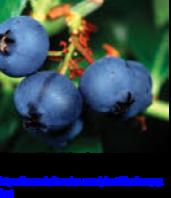
Blueberriesarepurportedtobehelpfulinage-relatedmaculardegeneration,Alzheimer'sdisease,highblood pressure,highcholesterol,heartdisease,anddiabetes.3
Pharmacology/MechanismofAction:
Blueberry’spurportedbenefitsareduetoitsanthocyanin(anantioxidant2)content,whichactasfreeradical scavengersagainstharmfuloxidantssuchasreactiveoxygenandnitrogenspecies.Thissupposedlydecreases thebody’soxidativestressandhelppreventcardiovascularandneurodegenerativediseases.2
Available(Dosage)Forms:
Blueberriesmaybeconsumedfresh,aspowders,orasjuiceorjuiceconcentrates(concentratescanbemade intoextractsinpillorcapsuleforms.)3
TypicalDosing/Serving:
Dosingandservingofblueberrysupplementsareheavilydependentonthedosageformandeach manufacturers’instructions. Freeze-driedblueberrieshavemostoftenbeenusedbyadultsindosesof22-50 gramsbymouthdailyforupto16weeks.2 Blueberrysupplementcapsulesmaybetakenas1capsuletwice daily 4
Effectiveness:
Freeze-driedblueberrieshavemostoftenbeenusedbyadultsindosesof22-50gramsbymouthdailyforupto 16weeks.Studieshaveshownthatblueberryextractmayimproveepisodicmemory,andmayhelppatients achievelowersystolicbloodpressureaftertakingblueberrysupplementsfor3months.However,furtherstudies toinvestigateblueberry’smechanismofdiseasepreventionareneeded.5
Safety/Warnings/Toxicities:
- Patientswithglucose-6-phosphatedehydrogenase(G6PD)deficiencymayhaveproblemsbreaking downcertainchemicalsinblueberries.3 Theseindividualsshouldcheckwiththeirhealthcareproviders beforeeatingblueberries.3
- Blueberrymightaffectbloodglucoselevelsandcouldinterferewithbloodsugarcontrolduringandafter surgery.3
Adverse/SideEffects:
Drinksmadewithfreeze-driedblueberriesmightcauseconstipation,diarrhea, nausea,orvomitinginsomepeople.3
Interactions:
● Blueberryjuicemightdecreasethebody’srateofeliminationofbuspirone (BuSpar)andflurbiprofen(Ansaid),butthisisunlikelyamajorconcern.3
● Takingblueberriesalongwithdiabetesmedicationsmightcausebloodsugar todroptoolow.Diabeticpatientsshouldmonitorbloodsugarclosely.3
● Drinkingmilkwithblueberriesmightlowerthepotentialhealthbenefitsof blueberries,butspacingblueberryandmilkconsumptionby1-2hoursapart mightpreventthisinteraction.3
ArticleSummary:
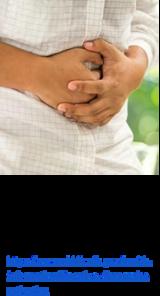
Inonehumanstudyinvestigatingtheeffectsofblueberriesonneuroprotectionand otherdiseases/symptomsofneurologicalcomplexities,researchersfoundthattheparticipantswhoreceived blueberryextractshowedanimprovementofepisodicmemory 5
Personalopinion:
Blueberrysupplementsdefinitelyhavesomeeffectsinneural,cardiovascular,andeyehealth.However,more studiesareneededinordertoobserveifthepurportedbenefitscanbesupportedbyreallifeevidence.~JWang
References:
1 BlueberryPlant Britannica AccessedFebruary22,2024 https://wwwbritannicacom/plant/blueberry-plant
2 MattioliR,FranciosoA,MoscaL,SilvaP Anthocyanins:AComprehensiveReviewofTheirChemicalPropertiesandHealthEffectsonCardiovascularand NeurodegenerativeDiseases. Molecules 2020 Sep; 25(17): 3809 doi: 10 3390/molecules25173809
3 Blueberry HerbsandSupplements MedlinePlus AccessedFebruary22,2024 NationalInstituteofHealth Bethesda,MD https://medlineplusgov/druginfo/natural/1013html
4 BlueberryExtract8000mg-150Capsules Horbäach AccessedFebruary22,2024 https://horbaachcom/products/blueberry-extract-8000mg-150-capsules
5 PhuongHL Tran,PHL,Tran,TTD BlueberrySupplementationinNeuronalHealthandProtectiveTechnologiesforEfficientDeliveryofBlueberry Anthocyanins Biomolecules 2021Jan;11(1):102 doi:103390/biom11010102
6 Blueberry Home&GardenInformationCenter AccessedFebruary22,2024 https://hgicclemsonedu/factsheet/blueberry/
7 HerbsinHistory:Blueberry AmericanHerbalProductsAssociation AccessedFebruary22,2024 https://wwwahpaorg/herbs in history blueberry
8. BlueberriesandHealth.USDAAgriculturalResearchService.AccessedFebruary22,2024. https://wwwarsusdagov/plains-area/gfnd/gfhnrc/docs/news-articles/2014/blueberries-and-health/
9 WhatIsBlueberryExtract? VerywellHealth AccessedFebruary22,2024
https://wwwverywellhealthcom/blueberry-extract-89424#toc-dosage-how-much-blueberry-extract-should-i-take
10 NationalInstituteofHealth Constipation NationalInstituteofDiabetesandDigestiveandKidneyDiseases AccessedApril7,2024
https://wwwniddknihgov/health-information/digestive-diseases/constipation
Cannabidiol (CBD)
Name: Levi Reno
Title: Student Pharmacist
Date: Spring 2024
History:
Cannabidiol is one of the nonpsychoactive forms of cannabis which was discovered in the 1960s In the 1970s CBD started being used clinically During the 2010s the first prescription CBD product was approved by the FDA, and the USA defined CBD as a non-psychoactive product making it legal.

Common Uses: seizure therapy, anxiety, pain, addiction therapy
Dosage Forms:
Oral solutions, vapes, extract, topicals, oil, and edibles.
Dosing:
For many forms of CBD dosing information cannont be found. However, the oral liquid for seizures is dosed at 2.5 mg/kg twice a day.
Pharmacology:
CBD is an antagonist for CB receptors. It inhibits anandamide-mediated neurotransmission The body produces the active metabolite via CYP3A4, which is 7-hydroxylCBD
Effectiveness:
There is limited research on the effectiveness of some CBD products. However, the prescription CBD product has a lot of research proving it is effective. For prescription CBD it take 1 to 3 hours to be effective, and about 5 hours to reach peak concentration.
Adverse Effects:
Changes in alertness, GI issues, mood changes, fatigue, decreased appetite, sleep disturbances, and increased heart rate
Safety:
CBD could cause hepatotoxicity when mixed with other medications. Effects during pregnancy have not been determined, but CBD has been shown to be found in breastmilk.
Interactions:
CBD increase side effects of drugs metabolized by CYP3A4 and CYP2C19. It may also interact with anticholinergic drugs. CBD is known to increase serum concentration of many drugs.
Summary of One Article:
In the study Cannabidiol use and effectiveness: real-world evidence from Canadian medical cannabis clinic, written by Rapin, Gamaoun, Hage, Arboleda, and Prosk, the effectiveness of CBD in the treatment of pain, anxiety, and depression was tested. In the study they found that the patients symptoms improved at the 6 month follow up, but there was no improvement at the 3 month follow up. According to the data depression, anxiety, and wellbeing improved due to the use of CBD while pain only improved slightly. Overall, this study suggests that CBD is an effective treatment for anxiety, depression, and well being.
Professional Opinion:
Based on the limited research on the effectiveness of CBD products I would not recommend most CBD products. For the prescription only products, it may be worth trying for some individuals since there is evidence of its effectiveness. Until more research is done on CBD and CBD products its use should be avoided. L. Reno
References:
Cannabidiol (Oral Route) Proper Use - Mayo Clinic. www.mayoclinic.org. Accessed February 24, 2024. https://www.mayoclinic.org/drugssupplements/cannabidiol-oral-route/proper-use/drg-20443842#:~:text=Adults%20and%20children%201%20year Grinspoon P. Cannabidiol (CBD): What we know and what we don’t. Harvard Health Blog. Published August 24, 2018. https://www.health.harvard.edu/blog/cannabidiol-cbd-what-we-know-and-what-we-dont-2018082414476 PubChem.Cannabidiol.pubchem.ncbi.nlm.nih.gov.AccessedFebruary24,2024.https://pubchem.ncbi.nlm.nih.gov/compound/644019#secti on=Biological-Half-Life
Cannabidiol Uses, Benefits & Dosage - Drugs.com Herbal Database. Drugs.com. Accessed February 24, 2024. https://www.drugs.com/npp/cannabidiol.html#side-effects
Rapin L, Gamaoun R, El Hage C, Arboleda MF, Prosk E. Cannabidiol use and effectiveness: real-world evidence from a Canadian medical cannabis clinic. Journal of Cannabis Research. 2021;3(1). doi:https://doi.org/10.1186/s42238-021-00078-w
Chamomile

https://www.epicgardening.com/growing-chamomile/
Janeen Dahouk Student Pharmacist Spring 2024
Background: Chamomile is a medicinal herb from southern and eastern Europe but can be found worldwide. While it is cultivated for its blue essential oil, its been used in remedies for thousands of years (seen in ancient Egypt, Greece, and Rome. It is considered such an important remedy, it is found in the pharmacopoeia of 26 different countries and is an important ingredient in various traditional, Unani, and homeopathic medicinal preparations. Though out history, it has been used as antispasmodics and sedatives for digestive and rheumatic disorders. Its tea has been used to treat parasitic worms and it has also been used as a skin wash to clean wounds and ulcers, along with various other things. 1,4
Scientific Name:
Matricaria chamomilla L
Common Names: star among medicinal species, German Chamomile, Blue Chamomile, Hungarian Chamomile, Wild Chamomile, Pin Heads, etc.3,4
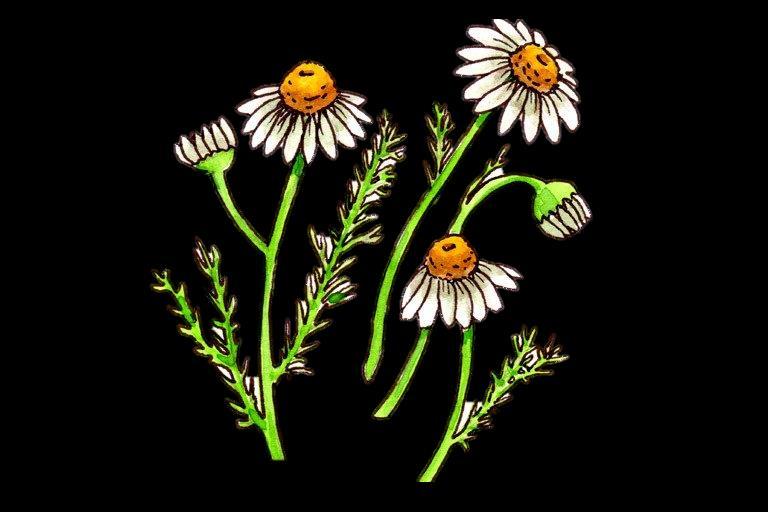

https://www.wakeupbodynutrition.com/swanson
Common Uses: Chamomile has a wide variety of purported uses that range from being a potential analgesic, antispasmodic, antiinflammatory and dermatologic to being used for the treatment of anxiety, insomnia, osteoporosis prevention and cancer. There is also many more reported common uses for chamomile. 1
Dosage Form: Some dosage forms the chamomile are capsules, syrups, creams, ointments, mouth rinses, and oils. It is also common to inhale chamomile by boiling the flowers itself.1
Typical Serving: While there is a lack of data supporting specific dosing recommendations, people often take doses between 2201500 mg daily for up to 26 weeks, depending on the condition they are attempting to treat. 1,2
Mechanism ofAction: There are a couple of possible mechanisms of action found in chamomile due to the actives the make it up, such as flavonoids, coumarins, sesquiterpenes, terpenoids, spiroether, essential oil, polysaccharides, amino acids, fatty acids, and minerals. One possible mechanism of action that may have some anticancer effects is the terpenoid bisabolol oxideA has shown to have antiproliferative effects on leukemia cells. Some research also shows that chamomile may be able to inhibit cyclooxygenase and lipoxygenase enzymes, ultimately causing a reduction in prostaglandin and leukotriene production, possibly causing an antiinflammatory effect.1,4
Reference 3
Toxic Effects: There are limited studies to evaluate the toxicity of chamomile. Bisabolol has been found to have low toxicity in animals (with 15ml/kg oral median lethal dose in rats and mice). High doses of chamomile have been shown to be a teratogenic risk when taken with the max tolerated dose of alcohol. 1
Adverse Effects: The adverse effects of chamomile are from an allergic reaction to it. This reaction is also commonly reported if there is an allergy to ragweed, asters, chrysanthemums, and other plants in theAsteraceae family. 1
https://www.amazon.com/Frontier-Co-op-Nonirradiated-SustainablyMatricaria/dp/B001VNGN9C.
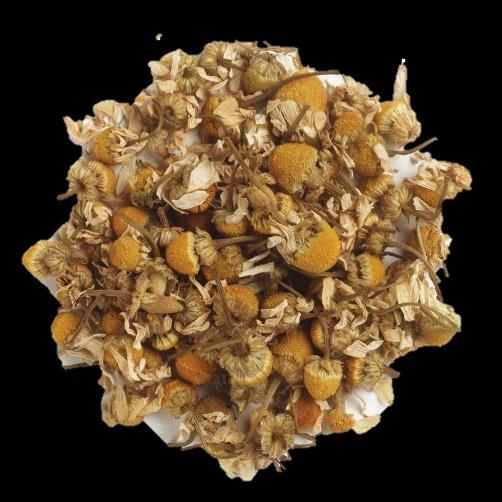
Case Study: After a study that was conducted found that chamomile oil applied topically in patients with severe carpal tunnel syndrome had positive results, researchers conducted a follow up study. During this study, the researchers created a double-blind, randomized, placebo trial for patients with mild/moderate carpel tunnel syndrome. This was done to find the effects of chamomile oil on the symptoms. After four weeks, of the application of 1% chamomile oil, it was found that there was improvement in symptom severity, functionality, dynamometry, and compound latency in the patients who had chamomile over the placebo.1
Effectiveness: There is currently not enough evidence to show that chamomile is effective for treatment. There are few studies, and the studies that do exist often either isolate an active found in chamomile and test it, or it is tested in combination with another product, so it is unclear which product was shown to be effective. 1, 2, 4
Interactions: Chamomile has been shown to interact with drugs like Warfarin, CNS depressants, contraceptive drugs, CYP1A2 substrates, CYP2C9 substrates, CYP2D6 substrates, CYP3A4 substrates, estrogens, and tamoxifen. There are no known food interactions. 1, 2

https://www.clinikally.com/blogs/news/skincare-benefitsof-chamomile.
Professional Opinion: In my opinion, while chamomile may be beneficial to some people, I cannot recommend to others. There is little evidence that supports its effectiveness in treatment and it interacts with many different commonly used drugs. I understand that chamomile is important and culturally significant to some people, so I would recommend talking to a doctor before proceeding with the supplement. ~ J. Dahouk
1. Chamomile. NaturalProducts Database. Lexicomp. Wolters Kluwer Health, Inc. Riverwoods, IL. Accessed February 23, 2024. http://online.lexi.com
2. German Chamomile. NatMed. Trchealthcare. Denver, CO. February 23, 2024. https://naturalmedicines-therapeuticresearchcom
3. JD A, EB F. Chamomile. MemorialSloan KetteringCancer Center. Accessed February 23, 2024. https://www.mskcc.org/cancer-care/integrative-medicine/herbs/chamomile-german.
4. Singh O, Khanam Z, Misra N, Srivastava MK. Chamomile (Matricaria chamomilla L.): An overview. Pharmacogn Rev 2011;5(9):82-95. doi:10.4103/0973-7847.79103
Chasteberry
Keagan Smith
 Student Pharmacist
Student Pharmacist
Spring 2024

Dosage forms
This is typically found in capsules at 20 or 40mg. It can also be found in powders It is recommended that someone starts at 20mg and works their way up to 40mg when the supplement isn’t working as well as it was at the start.

Chaste Tree
• Monk’s pepper •
Background and History
Chasteberry is native to the mediterranean region and parts of Asia. Monks used it to decrease sexual desire and lust.
Common Uses
It is used as a supplement. It’s main use it to decrease menstrual pain. It also helps with menstrual related problems such as reducing fibroids, boosting female fertility, and decreasing breast tenderness.
Chasteberry Mechanism of Action
It is thought to be prolactin inhibition. It binds dopamine receptors in the anterior pituitary.

https://japsonline.com/admin/ph p/uploads/3583_pdf.pdf

• Vitex anguscactus • •
•
Safety and Toxicity

This supplement is thought to be safe. There have been occasions of adverse effects however, they are rare and often mild.
• Adverse effects•
•Nausea•
•Acne•

Effectiveness

While there are varying sources saying this is effective or not, I don’t think it is effective. Through studies, this has seen as a placebo effect and doesn’t directly help menstrual symptoms.
Interactions


There are few Drug interactions however, hormonal medicine such as birth control can interact. Chasteberry can also interact with drugs used in Parkinson’s disease and drugs used to treat psychosis
Article Summary
https://www.nccih.nih.gov/h ealth/chasteberry

In summary, this supplement doesn’t seem to be working as discussed earlier. However, it should be used if the patient thinks its working because of its placebo identity.
Personal Opinion

This supplement doesn’t work. There are too many sources agreeing with me. Although it doesn’t work, if the patient says it does, they should keep using it.
-KSmith
References

Miller K. Chasteberry: Uses and Risks. WebMD. Accessed February 22, 2024. https://www.webmd.com/vitamins-andsupplements/chasteberry-uses-and-risks Chasteberry. NCCIH. https://www.nccih.nih.gov/health/chasteberry What Is Chasteberry, and What Can It Do? Cleveland Clinic. https://health.clevelandclinic.org/chasteberry-benefits-and-risks
Common Uses
Diabetes1
Weight Loss1
Binge Eating1
Hyperlipidemia1
Ischemic Heart Disease1
Osteoporosis1
Polycystic Ovary Syndrome1
Refractory Mood Disorders
Chromium
Grace Garland, Student Pharmacist, Spring 2024
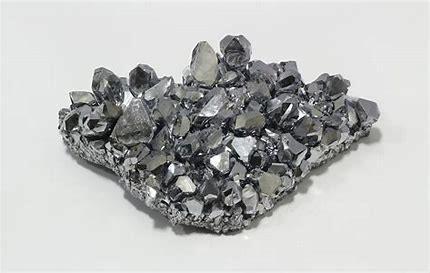
https://www.flickr.com/photos/dr_laser/82096263 67/
Common Names
• Chromium
Chloride1
• Chromium
Nicotinate1
• Chromium
Picolinate1
Typical Dosing
Dietary Intake: 25mcg/day for women and 35mcg/day for men1
Mechanism ofAction
The precise mechanism for chromium’s activity has not been identified.2
It has been proposed that chromium binds to an oligopeptide to form chromodulin, a low molecular weight, chromium-binding substance that binds to and activates the insulin receptor to promote insulin action.Antioxidant effects have also been observed.2
Dosage Forms
• Capsules1
• Tablets1
• Powder1
• Liquid1
Background/History
Chromium is a metal that is an important additive in the manufacture of steel alloys, greatly increasing their durability and corrosion resistance. Chromium is considered to be important for normal glucose metabolism so many over the counter products promote the use alone or with glucose tolerance factor to improve carbohydrate utilization.1
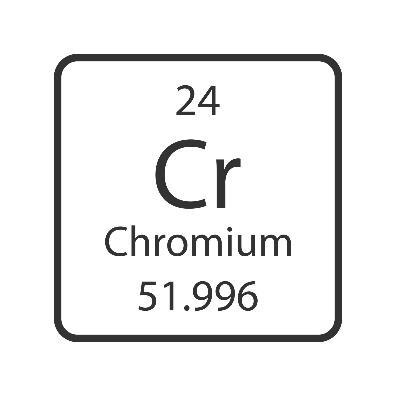
https://www.vecteezy.com/vector-art/10420800chromium-symbol-chemical-element-of-theperiodic-table-vector-illustration
Effectiveness
Likely effective: chromium deficiency (preventing and treating symptoms such as hyperglycemia, glycosuria, sudden weight loss, peripheral neuropathy, confusion) 3
Possibly effective: diabetes (modestly beneficial for improving glycemia control, especially when poorly controlled)(doses greater than 200mcg daily) 3
Safety/Warnings
Drug Interactions
Antidiabetic Medications3
Aspirin3
Insulin3
NSAIDs3
Likely safe when taken orally and appropriately in medicinal amounts, short-term. Safely used in doses up to 1000mcg daily for up to 6 months.3
Likely safe in children (400mcg daily for 6 weeks), pregnancy (28mcg daily), and during lactation (44mcg/daily).3
No risk of genotoxicity at appropriate dosages over a short period as a dietary supplement, however at higher dosages concern exists for potential genotoxic effects1
Study Summary
Asystemic review was conducted on the effects of chromium supplementation on glucose metabolism and lipid levels.4
Among the patients with type 2 diabetes, chromium supplementation improved glycosylated hemoglobin levels by -0.6% and fasting glucose by -1.0 mmol/L but not lipids. There was no benefit in individuals without type 2 diabetes.4
In conclusion, there was no significant effect of chromium on lipid or glucose metabolism in people without diabetes, while chromium supplementation significantly improved glycemia in patients with diabetes.4
Adverse Effects
Generally well tolerated3
Most Common: Gastrointestinal irritation, headaches, insomnia, irritability, mood changes3
Professional Opinion
Chromium has been shown to be effective in improving glycemia in patients with diabetes and is generally well tolerated. On the other hand, if a patient is already taking another antidiabetic medication or insulin, chromium may have an additive effect, increasing the risk of hypoglycemia. I believe chromium can be a useful and effective supplement in helping to aid in glycemic control as long as no interactions with other drugs are present.
~ G. Garland
References
1. Chromium. Natural Products Database. Lexicomp. Wolters Kluwer Health, Inc. Riverwoods, IL.Accessed February 13, 2024. http://online.lexi.com
2. Chromium. National Institutes of Health.Accessed February 13, 2024. https://ods.od.nih.gov/factsheets/ChromiumHealthProfessional/
3. Chromium. NatMed.Accessed February 13, 2024. https://naturalmedicines-therapeuticresearchcom.eu1.proxy.openathens.net/databases/food,-herbssupplements/professional.aspx?productid=932#background
4. Effect of chromium supplementation on glucose metabolism and lipids: a systemic review of randomized controlled trials. National Library of Medicine.Accessed February 13, 2024. https://pubmed-ncbi-nlm-nihgov.ezproxy.lib.purdue.edu/17519436/
Maddy Packer
Student Pharmacist
Spring 2024

Cranberry Supplement
Scientific Name1
Vaccinium macrocarponAiton
Common Name
Cranberry
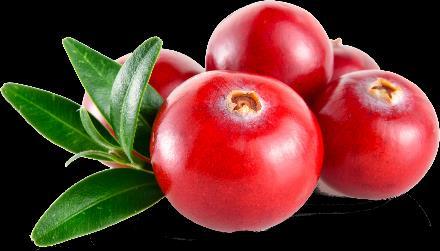
Purpoted uses2
• Urinary Tract Infections
• Antibacterial
• Cardiovascular risk reduction
• Diabetes

• Memory
Background3
Cranberries are a type of evergreen shrub. They grow in wet habits in northeastern and central parts of North America. They are characterized by small, dark green leaves and dark red berries that are egg-shaped. Many consider cranberries to be superfood due to their high nutrient and antioxidant content. They are typically used for preventing Urinary Tract Infections (UTIs) and potentially the reduction of cardiovascular risk.
How it works1:
Cranberry does not appear to directly affect bacteria in the urinary tract or affect urine pH. It does appear to inhibit the ability of bacteria to adhere to surfaces and prevent bacterial biofilm formation. It may decrease symptoms by suppressing inflammatory processes.
Dosage forms & typical dosing/servings2
Dosage Form
Dried Powder
Dose & Serving Duration of Therapy
250-1500mg daily Up to 6 months
Extract 120-1600mg daily
Cranberry Juice 120-300mL daily
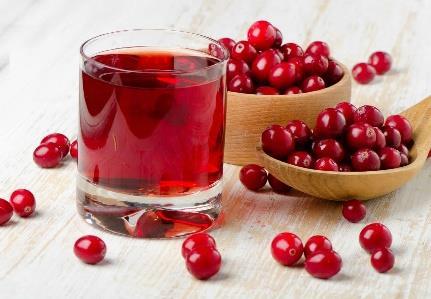
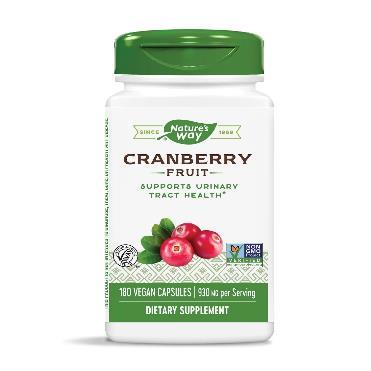
to 12 weeks
to 90 days

Up
5 5 5
Up
Effectiveness1,2
Cranberry Supplement

The use of cranberry for prevention of recurrent UTIs in women is generally effective and recommended. Cranberry will not treat UTIs, but it may help with symptoms.
Adverse effects/side effects1,2
The most common side effect is diarrhea and gastrointestinal discomfort.Another common side effect is nocturia. There are also rare cases of skin redness and itching
Summary of article4:
The article written from the perspective of a dietician, explains the benefits of cranberry but also the areas where it could cause issues. The main benefits are the antioxidants, immune support, promotion of oral health, and promotion of urinary tract health. The issue often comes when selecting the healthiest cranberry juice due to the added sugar. It is best to opt for 100% cranberry juice with no added sugar.Additionally, reading the ingredient list and make sure there are no added preservatives or additives.
References
Safety/warning/toxicities1
Likely safe when used orally and appropriately. Juice up to 300mL daily and extract up to 800 mg BID
No studies on toxicities at this time
Patients with diabetes should caution with cranberry juice as the added sugar could spike sugars
Interactions1
• Atorvastatin (increases levels)
• CYP2C9 Substrates
• CYP3A4 Substrates
• Diclofenac (increases levels)
• Nifedipine (increase levels)
• Warfarin (increase levels)
Professional Opinion:
My personal and professional opinion is cranberry is relatively safe when used orally for prevention of uncomplicated UTIs. It is relatively safe and has few side effects. If you are pregnant, elderly, or diabetic, this may not be the best choice due to lack of benefit or danger of added sugar. ~M Packer
1. Cranberry. NatMed. TRCHealthcare.Accessed February 22, 2024. https://naturalmedicinestherapeuticresearch-com.eu1.proxy.openathens.net/databases/food,-herbssupplements/professional.aspx?productid=958
2. Cranberry. Lexi-Drugs. Lexicomp. Wolters Kluwer Health, Inc. Riverwoods, IL. Accessed February 22, 2024. http://online.lexi.com
3. AtliArnarson. Cranberries 101: Nutrition Facts and Health Benefits. Healthline. July 13, 2023. Accessed February 22, 2024. https://www.healthline.com/nutrition/foods/cranberries
4. Mackenzie Burgess. Is Cranberry Juice Good for You? Here’s What a Dietician Says. EatingWell. October 13, 2020.Accessed February 22, 2024. https://www.eatingwell.com/iscranberry-juice-good-for-you-8357343
5. Cranberry Supplements. Google Images.Accessed February 22, 2024
Madeline Connors
2nd Year Professional
Pharmacy Student
Spring 2024
Common Names
Creatin; Creatine; Creatine monohydrate; Creatine phosphate
Clinical Trial
• Double blind, placebocontrolled trial
• Study determined effect of oral creatine on resting metabolic rate, body composition, muscular strength, and limb blood flow
• Divided into three groups: creatine, resistance training and creatine + resistance training
• Dosing was 20 grams daily for days 1 through 4, then 10 grams daily for days 6 through 28
• Results showed increased total and fat-free body mass, muscular strength, blood flow, and rest energy expenditure with both creatine and resistance training
Creatine
2- [Carbamimidoyl(methyl)amino]acetic acid
Common uses
Increased performance in short-duration, maximal intensity resistance training.

Creatine (2023). {Photograph}. NASM Blog. https://blog.nasm.org/creatineexplained
Background and History
Creatine was first discovered in 1832 by French scientist Michel Eugene Chevruel where he extracted it from meat. It gained popularity after the 1992 Olympic Games, where gold medalists used creatine.
Mechanism of Action
Creatine increases the levels of phosphocreatine in skeletal muscle cells, which is used by creatine kinase to regenerate ATP. It is thought to postpone fatigue for sport-enhancing results.
Dosage Forms
Creatine monohydrate is available as bars. Gels, capsules, gum, liquid, and powder.
Professional Opinion
Although short term use is concluded as safe in the scientific literature, I personally and professionally would not take this supplement. There is a lack of studies about long term use of creatine, so it would be hard for me to recommend to a patient.
M Connors
References
Creatine. Lexi-Drugs. Lexicomp. Wolters Kluwer Health, Inc. Riverwoods, IL. Accessed Febuary 22nd, 2024. http://online.lexi.com
Butts J, Jacobs B, Silvis M, et al. Creatine use in sports. Sports Health. 2018;10(1):31-34. doi:10.1177/1941738117737248
Arciero PJ, Hannibal NS, Gentile CL, et al. Comparison of creatine ingestion and resistance training on energy expenditure and limb blood flow. Sports Metabolism. 2001;50(12):14291434. doi:10.1053/meta.2001.28159
Common Dosages
Creatine is available as a “high dose, short term” treatment of 20 grams per day for 7 days. It is also available as a “lower dose, long term” treatment of 2-5 grams per day for 4 to 6 weeks. These are typically seen dosages for sport enhancement.
Effectiveness
Scientific literature supports creatine supplementation for increased performance in short-duration, maximal intensity resistance training. The results vary between 5 days to 4 weeks depending on regimen.
Safety
Short term use of creatine is considered safe with no extreme adverse effects. Long term use of creatine has not been studied. The safety in children/adolescents and pregnant people is not known.
Warnings/Toxicity
Creatine is contraindicated in patients with history of renal impairment or those taking nephrotoxic agents.
Adverse Reactions
No severe adverse reactions have been reported for creatine. There is a potential for renal damage and hepatic injury. It is known to cause mild water retention and decreased urinary volume, which may lead to a risk of dehydration.
Interactions
No food or drug interactions documented.
Page 2
Karen Robles-Garcia
Student Pharmacist
Purdue University College of Pharmacy
Spring 2024
Street Names
→ Garra del Diablo
→ Grapple plant
→ Wood spider
→ Wool Spider
→ Harpagphytum
→ Harpago
Article Summary
Arnicare Arthritis Cream is the first homeopathic topical arthritis cream that features Devil’s Claw. It is available OTC for minor symptoms due to arthritis. Borion Vice President, Ron Gentry, states that “[Devil’s Claw] has demonstrated its versatility and utility”. Additional clinical trials are needed to support its reported efficacy and safety.
Arnicare Product Line Expands with New Homeopathic Arthritis Cream. MPR. RPh, D.E. (2023, July 17).
http://www.empr.com/ home/news/arnicareproduct-line-expandswiht-new-homeopathicarthiritis-cream/
Devil’s Claw
(Harpagophytum procumbens)
What is it?

Devil’s Claw (2023). [Photograph]. Verywellhealth. https://www.verywellhealth.com/devils-claw-what-should-i-knowabout-it-89445.
History & Uses
• This herb is native to South Africa where it has been traditionally used to for arthritis, blood diseases, and urinary tract infections.
• Today, it is mainly used for arthritis, general pain, dyspepsia, fever, and blood diseases.
Pharmacological Profile
Pharmacology & Mechanism of Action
• Iridoid glycoside constituents in the herb provide anti-inflammatory effects
• High concentrations of harpagoside inhibits COX-2 and nitric oxide synthetase to reduce pain and inflammation as well
Dosage Forms & Servings
• By mouth: 108-2400 mg daily for 8-12 weeks
o Capsules, tablets, herbal tea, tinctures
• On skin: not enough information
o Topical ointment
Professional Opinion
Because of the lack of scientific evidence for the long-term efficacy and safety of Devil’s Claw, as well it’s multiple interactions, Devil’s Claw should not be used as a medical remedy for antiinflammation as an alternative or in addition to current therapies.
K Robles-Garcia
References
Viljoen, A., Chen, W., Mulaudzi, N., Kamatou, G., & Sandasi, M. (2022) Harpaophytum procumbens. Elsevier EBooks, 103-112. https://doi.org/10.1016 /b978-0-12-8237793.00010-2
Devil’s Claw: Uses, Side Effects, Interactions, Dosage, and Warning. Webmd.com.
https://www.wedmd.co m/vitamins/ai/ingredien tmono-984/devils-claw
Devil’s Claw: MedlinePlus Supplements. (2015). Medlineplus.gov. https://medlineplus.gov /druginfo/natural/984.h tml
Devil’s Claw Information / Mount Sinai – New York. (n.d). Mount Sinai Health System. https://www.mountsinai .org/healthlibrary/herb/devilsclaw#:~:text=Devil
Efficacy
• Has been shown to be possibly effective for pain relief when taken by mouth
• Oral use alongside NSAIDs may lessen osteoarthritis pain
• Not enough reliable information to confirm proper efficacy
Adverse Effects
• By mouth: diarrhea, indigestion, skin reactions
• On skin: not enough reliable information to say
Safety & Toxicities
• Pregnancy/Breast-feeding: not enough information to confirm safety. Avoid use.
• Heart Problems: may affect blood pressure, heart rate, and/or circulation. Avoid use with heart conditions
• Gallstones: may increase bile production, avoid use.
• Hypernatremia: may lower Na+ levels. Avoid use.
• Peptic Ulcer Disease: may increase production of stomach acid. Avoid use.
Interactions
• Moderate interaction- Medications
o CYP2C19 substrates
o CYP2C9 substrates
o CYP3A4 substrates
o Warfarin
• Minor interaction – Medications
o H2 blockers
o Proton Pump Inhibitors
o P-glycoprotein substrates
• No known interactions with food or supplements
Page 2
---------------------------
Docosahexanoic Acid (DHA) Docosahexanoic Acid (DHA) Docosahexanoic Acid (DHA)
Khoa Thai, student pharmacist
Spring 2024

Scientific name
Docosahexanoic Acid (DHA), omega-3 fatty acids, fish oil¹
Purported & common use
DHA is commonly used in the treatment and prevention of dyslipidemia, as well as other cardiovascular diseases such as stroke and atherosclerotic diseases² Additionally, DHA is frequently used during pregnancy as an essential omega-3 acid supplement to support fetal brain growth.²
dosage forms
Capsules (500mg or 1000mg)¹
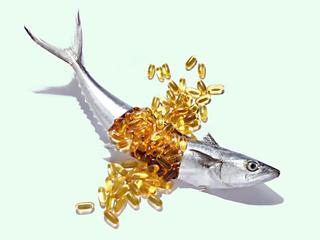
American Heart Association. Updated December 12, 2019. Accessed April 8, 2024
Background & history
DHA belongs to a group of chemicals known as omega-3 fatty acids.² DHA is often mistakenly interchanged with omega-3 fatty acids and fish oil³ Although DHA is an omega-3 fatty acid, it is not the sole ingredient in fish oil; fish oil often contains other omega-3 fatty acids such as alpha-linolenic acid (ALA) and eicosapentaenoic acid (EPA)³ DHA is commonly found in algae, kelp, and seaweed, which are often part of the diet for marine life, resulting in many fishes and related products such as fish oil containing DHA³ DHA is often recommended as a dietary supplement for cardiovascular disease and during pregnancy, as it is a crucial component for fetal brain growth²
pharmacology & mechanism of action
The mechanism of action in the reduction of cardiovascular events is not fully understood; however, one suggested mechanism is the reduction of triglyceride-rich very low-density lipoprotein production in the liver.¹ Other mechanisms may include an increase in hepatic mitochondrial and peroxisomal beta-oxidation¹
Dosing
In the treatment of triglyceride reduction, patients should take 4 grams once daily or 2 grams twice daily.¹ As a supplement, patients should take 1 to 3 tablets once daily (composition varies)¹ Specifically, during pregnancy, patients should take an adequate amount of at least 300mg DHA daily¹
wwwheartorg
Docosahexanoic Acid (DHA) Docosahexanoic Acid (DHA) Docosahexanoic Acid (DHA)
warning & toxicity
DHA may occasionally increase LDL levels¹ DHA may cause prolonged bleeding time with concomitant use with anticoagulants/anti-platelet agents, hepatic impairment, fish allergy, atrial fibrillation, and abnormal lipid profiles¹
Safety
Hypersensitivity in patients who are sensitive to omega-3 fatty acids or its other related ingredients¹

Adverse & side effects
DHA may occasionally increase LDL levels¹ DHA may cause prolonged bleeding time with concomitant use with anticoagulants/anti-platelet agents, hepatic impairment, fish allergy, atrial fibrillation, and abnormal lipid profiles¹
effectiveness
DHA has been shown to significantly reduce triglyceride levels in patients with dyslipidemia² DHA in fish oils, along with lifestyle modifications, has been shown to be an effective supplement regimen to reduce triglyceride levels in patients before other drug therapy is used²
Article
DHA is a common omega-3 fatty acid that plays an important role in the body. Found naturally in oily fish, it is often paired with EPA in fish oils.⁴ However, DHA alone plays a significant role in managing triglyceride levels as well as improving cholesterol levels⁴ Additionally, it may alleviate symptoms of ADHD, preterm births, inflammation, and eye health Furthermore, DHA is recognized for its potential in alleviating symptoms of ADHD, preterm births, inflammation, and promoting eye health⁴ Its relationship with EPA in fish oils shows its importance as a fundamental nutrient for overall health and well-being⁴ Moreover, ongoing research highlights DHA's potential in mitigating the risk of neurodegenerative diseases, shedding light on its involvement in maintaining brain health⁴
References
1 Horrocks LA, Yeo YK Health benefits of docosahexaenoic acid (DHA) Pharmacol Res 1999;40(3):211-225 doi:101006/phrs19990495
Docosahexanoic Acid Lexi-Drugs Lexicomp Wolters Kluwer Health, Inc Riverwoods, IL Accessed Febuary 23, 2024 http://onlinelexicom
2 Bradbury J Docosahexaenoic acid (DHA): an ancient nutrient for the modern human brain Nutrients 2011;3(5):529-554 doi:103390/nu3050529
3 12 Health Benefits of DHA (Docosahexaenoic Acid) Healthline Published September 23, 2018 https://wwwhealthlinecom/nutrition/dha-benefits#TOC_TITLE_HDR_16
4




































































































 JeffreyDu StudentPharmacist
JeffreyDu StudentPharmacist
Echinacea
Spring2024
Background

Echinaceapurpurea,alsoknownasconeflower,isaspeciesofplantsthatbelonginthe Asteraceaefamily,andhavebeencommonlyusedassupplements.ItoriginatesfromNorth AmericaandwasfirstusedbytheNativeAmericans.

CommonUses
Echinaceaisrichinantioxidantsandhasbeentaken asasupplementtoboostimmunity Common conditionsthatpeopleuseEchinaceaforarethe commoncold,flu,pharyngitis,cough,andfever.
MechanismofAction
Echinaceacontainsamultitudeofeffectsonthe body,whichareantibacterial,antifungal, anti-inflammatory,antioxidant,antiviral, immunologic,wound-healing,andCYP450effects. Allofthesecontributetoaboostedimmunesystem.
Dosing
Dependingonthemanufacturer,Echinaceasupplementscomeintheformofliquidextract, tabletsorcapsules,andtheirstrengthsvary Ingeneral,Echinaceaistakenonceadayforashort periodoftime(around10daysforthelongest).Itcanalsobeusedincombinationwithother supplements,suchasVitaminCandGoldenseal.


Pharmacology
Echinaceahasproventobebeneficialinpreventingacold.However,itdoesn’tprovidea significantimpactonpatientswhohavealreadydevelopedacold.Inthemeta-analysis “Evaluationofechinaceaforthepreventionandtreatmentofthecommoncold”,14studieswere includedandanalyzed.ItwasdiscoveredthatEchinaceadecreasedtheriskofcatchingacoldby 58%andthedurationofthecontractedcoldby1-4days.TheseresultsrevealhowEchinaceais beneficialintermsofprophylaxisandrecoverytime.
Therehavebeenconcernsofsevereallergicreactionstoechinaceainchildren,soit recommendedagainstchildrenundertheageof12.Anotherwarningsuspectedechinacea’s inferencewiththebody’snaturalimmunesystemagainstCOVID-19.Althoughuncommon, adverseeffectsincludenausea,vomiting,diarrhea,heartburn,constipation,stomachupset, abdominalpain,andallergicreactions.Commondruginteractionsincludeinhibitingthe metabolismofcaffeine,CYP1A2,andCYP3A4.Thiswillincreasetheplasmaconcentrationof thesedrugs.Therearenoknowninteractionswithothersupplementsorconditions.
PersonalOpinion
AfterlearningmoreaboutEchinacea,Ipersonallydonotseeanyseriousconsequencesintaking Echinacea.However,Iwouldnotrecommendtakingit.Althoughitcandecreasetheriskof catchingacold,itcanonlybeusedforupto10days.Thus,itisnotaviableoptioninlongterm prophylaxisofthecommoncold.~JDu
References:
HostettmannK GeschichteeinerPflanzeamBeispielvonEchinacea[Historyofaplant:theexampleofEchinacea] ForschKomplementarmedKlassNaturheilkd 2003Apr;10Suppl1:9-12 German doi:101159/000071678 PMID:12808356
“Echinacea” NatMed Pro,naturalmedicinestherapeuticresearchcom/ Accessed23Feb 2024
ShahSA,SanderS,WhiteCM,RinaldiM,ColemanCI Evaluationofechinaceaforthepreventionandtreatmentofthecommoncold:ameta-analysis LancetInfect Dis 2007Jul;7(7):473-80 doi:101016/S1473-3099(07)70160-3 Erratumin:LancetInfectDis 2007Sep;7(9):580 PMID:17597571;PMCID:PMC7106401 https://wwwgooglecom/url?sa=i&url=https%3A%2F%2Fwwwhgtvcom%2Foutdoors%2Fflowers-and-plants%2Fconeflower-echinacea-plants&psig=AOvVaw1F56 Ao3CkRt9yVXItSuTr0&ust=1712624977799000&source=images&cd=vfe&opi=89978449&ved=0CBIQjRxqFwoTCMj78q23sYUDFQAAAAAdAAAAABAE

2
EveningPrimrose
Alvin Zhu, Student Pharmacist
Spring 2024
Background
Evening primrose is a biennial plant native to America and widespread to Asia and Europe. The plant blooms from June to September and is known for the yellow flowers that only open around sunset. Oil obtained from the plant’s seeds is rich in omega-6 essential fatty acids including gamma linolenic acid (GLA).
Summary
Scientific Name Oenothera biennis (evening primrose)
Common Uses Alcohol use disorder, atopic dermatitis, anticoagulation
Pharmacology/MOA GLA, regulates immune system function and TXA1
Dosage Forms Oral: Oil and Tablet
Typical Dosing 2-6 g PO D for 3-12 months

Common Evening Primrose. Applewood Seed Company. Accessed April 8, 2024. https://www.applewoodseed.com/product/evening-primrose-common/
E�ectiveness
Summary
Insu�cient Reliable Evidence: atopic dermatitis, diabetes, hyperlipidemia, osteoporosis
Safety/Toxicology Safe when used up to 6 g d for up to 1 year
Adverse E�ects Abdominal pain, diarrhea, dyspepsia, flatulence, n/v
Drug Interactions Lithium, lopinavir
Study of Evening Primrose for Eczema
A 2013 Cochrane review performed a meta analysis and evaluated 19 placebo-controlled randomized clinical trials conducted in both adults and children. It evaluated the e�cacy data of evening primrose to treat signs and symptoms of eczema. The study found that the supplement supports previous reports of the lack of e�cacy of evening primrose oil.
Professional Opinion
I would not use this medication as there is limited evidence the supplement is e�cacious to treating any specific diseases. The risks outweigh any possible benefits of taking the supplement. - A Zhu
References
1. Evening Primrose. NatMed Therapeutic Research Center. Accessed February 23, 2024. https://naturalmedicines-therapeuticresearchcom.eu1.proxy.openathens.net/databases/food,-hers-supplements/professional.aspx? productid=1006#safety
2. Evening Primrose. Lexi-Drugs. Lexicomp. Wolters Kluwer Health, Inc. Riverwoods, IL Accessed February 23, 2024. http://online.lexi.com
3. Bamford JT, Ray S, Musekiwa A, van Gool C, Humphreys R, Ernst E. Oral evening primrose oil and borage oil for eczema. Cochrane Database of Syst Rev. 2013;4:CD004416.
Feverfew
By: Hao Huang Student Pharmacist Spring 2024
Common Names: Feverfew, bachelor’s button, featherfew
Latin Name: Parthenium
Background and History
Feverfew originates from parts of western Asia and the Balkans, and was utilized by the Greeks and Early European Herbalists. It has a rich history in South America, used by Costa Ricans as an herb for digestive support and in Mexico as an antispasmodic
Common Uses
Feverfew is commonly used for migraines headaches, fevers, and pain.
Pharmacology and Mechanism
The active component is thought to be parthenolide which is thought to inhibit the release of certain chemical compounds. The exact mechanism is unknown, but feverfew is believed to have anti- inflammatory and vasodilatory properties.
Dosage Forms
Feverfew is available in various forms from capsules, tablets, extracts, and ointments. The most common being capsules.
Dosing/Serving
The typical dose varies, but a typical capsule contains 50-100 mg. It is important to follow the product- specific guidelines and recommendations or consult a healthcare provider.



Murray A. 2012, Feverfew Flower, image/jpeg, Wikimedia, accessed 24 March 2024, https://commons.wikimedia.org/wiki/File:Feverfew_flower_%286777805501%29.jpg
Effectiveness
The onset of feverfew varies among individuals, and there does not exist a timeframe for all patients. Some may experience quick symptomatic relief of migraines whiles others may take much longer to notice significant changes. The evidence of feverfew’s effectiveness in migraine prophylaxis is mixed, dietary supplements such as feverfew are not strictly regulated by the FDA and are not subject to the same scrutiny as pharmaceutical drugs leading to large variations in formulations among manufacturers which impacts effectiveness.
Interactions (Food/Drug)
Feverfew may have interactions with other herbs or medications that contain anticoagulant/antiplatelet properties, nonsteroidal anti-inflammatory agents, salicylates, or thrombolytic agents. Feverfew and many of these medications have similar properties and pharmacological targets, thus drug interactions should be monitored in patients should cautioned or monitored in patients taking feverfew and these medications. There are no well documented interactions with any foods.
Adverse/Side effects
Abdominal pain, Nausea/Vomiting, Diarrhea, Indigestion, Swelling of lips, tongue, or mouth, Rash/Skin irritation if applied topically
Safety and Toxicity
Contraindicated in patients with allergies to members of the Asteraceae family such as aster, chamomile, chrysanthemum, ragweed, sunflower, tansy, or yarrow
Pregnancy and lactation
Avoid use. Adverse effects have been documented. Avoid use in pregnancy as it may induce abortion.
Article Summary
In Feverfew (Tanacetum parthenium L.): A systematic review, Feverfew was found to contain higher concentrations of parthenolide in the leaves and flower heads, which give the plant its anti-inflammatory effects. The flower and leaves showed significant analgesic and anti-inflammatory properties that confirm the long history of Feverfews usage. This medication can be usedful and if advocated for safely an alternative for other medications.
Opinion
Feverfew has great anti-inflammatory properties and its historical use has given it more credibility than other natural products. However there are already plenty of other anti-inflammatories out there that have been more refined for human use. I would seek out butterbur/Petasites for migraine use before feverfew. I cannot recommend feverfew as a first line therapy. Talk with provider about complentary or alternative health products you use to create a health plan right for you.
Tuli P, Feverfew Flowers.jpg, image/jpeg, Wikimedia, accessed 3 March 2024, https://commons.wikimedia.org/wiki/File:Feverfew_Flowers.jpg
References
1. Pareek A, Suthar M, Rathore GS, Bansal V. Feverfew (tanacetum parthenium L.): A systematic review. Pharmacognosy reviews. January 2011. Accessed March 24, 2024. https://www.ncbi.nlm.nih.gov/pmc/articles/PMC3210009/.
2. Feverfew. National Center for Complementary and Integrative Health. Accessed March 24, 2024 https://www.nccih.nih.gov/health/feverfew1
3. Lexicomp. Feverfew Login. Accessed March 24, 2024. https://online.lexi.com/lco/action/doc/retrieve/docid/fc_rnp2/37501 45?cesid=2L0EhP2hFyb&searchUrl=%2Flco%2Faction%2Fsearch%3Fq%3Df everfew%26t%3Dname%26acs%3Dtrue%26acq%3Dfeverfew.




Image of flaxseed
© Steven Foster
Scientific
Flaxseed
Name:
Linum usitatissimum
Common Names: Flaxseed, Flax, Linseed
Rebecca
Liu Student Pharmacist Spring 2024
Background/History
Flaxseed is a food and fiber crop originally harvested for its fibers for textiles but in recent years, it has been consumed as a dietary supplement. It was first domesticated in the Fertile Crescent area and brought to the United States during colonial America. It is a brown leaf-shaped seed with a hard exterior.
Purpose/Common Use
Flaxseed is commonly used to decrease blood LDL, also known as “bad cholesterol” . It also has a very high fiber content which promotes flatulence and more structured feces.
Pharmacology/Method Of Action
Flaxseed is high in alpha-linolenic acid (ALA), an essential omega-3 fatty acid. ALA bas been indicated to significantly decrease TC and LDL in those with high cholesterol ALA causes the body to believe there is an adequate level of cholesterol and therefore slows down the body’ s production of LDL.
Available Dosing
Flaxseed is usually ingested orally and comes in the form of supplement pills and extract. The recommended dosing is 5-50g/day for the supplement pills or 4-60 mL of flaxseed oil daily to see improvement in LDL. Flaxseed products can also be incorporated into baked goods.
Effectiveness
Flaxseed is shown to improve constipation due to the high fiber content. Most research shows a total cholesterol decrease of 5-15% and a LDL decrease of 8-18%. It also does not seem to really affect HDL concentrations (the “good cholesterol”).
Safety/Toxicities
The cyanogenic properties of some flax constituents theoretically suggest that ingestion of large amounts of the plant may be harmful; heating, however, appears to destroy the cyanogenic glycosides. Overall, flax seems to be very tolerable and easy to process for most patients.
Adverse Effects
Flaxseed is generally well tolerated. It can sometimes cause bloating and digestive issues similar to other fiber products. This only applies to flaxseed not flaxseed oil
Article Summary
This article is by Lin Yan talk about the benefits of flaxseed. Flaxseed, historically utilized for its versatility, is rich in omega-3 fatty acids, fiber, and protein, offering potential benefits for cardiovascular health and cancer prevention. Incorporating one to two tablespoons of ground flaxseed into daily intake could significantly enhance overall well-being. Proper storage and preparation methods ensure retention of its nutritional potency, making flaxseed a valuable addition to a balanced diet.
Interactions
Flaxseed contains a noticeable level of mucilage and can affect the absorption of drugs. Therefore, drugs should be taken 1-2 hours before or after flaxseed to prevent decreased absorption. Crushing and ingesting with food can increase absorption.
Opinion
My professional opinion is that flaxseed does not have clinically significant effects on LDL and TG, but it is a good option for anyone who is looking for a supplement to help with their cholesterol. It can be a good supplement but should not be used as treatment.
-R. Liu
Flaxseed. Natural Medicines. TRC Denver, CO. Accessed 20 February, 2024.https://naturalmedicines-therapeuticresearchcom.eu1.proxy.openathens.net/databases/food,-herbs-supplements/professional.aspx?productid=991#effectiveness Flaxseed. Natural Products Databases. Lexicomp. Wolters Kluwer Health, Inc. Riverwoods, IL. Accessed 20 February, 2024. http://online lexi com
acid supplementation
lipid
Nutrition 2019;59:121-130 doi:10
References Mousavi SM Shab-Bidar S Kord-Varkaneh H Khorshidi M Djafarian K Effect of alpha-lipoic
on
profile: A systematic review and meta-analysis of controlled clinical trials
1016/j nut 2018 08 004

Garcinia Cambogia
Common name: Garcinia/ Malabar tamarind/ Brindle berry.1
Background
Garcinia cambogia, a member of the Clusiaceae family, originates from India and Southeast Asia With a rich source of organic acids, amino acids, benzophenones, xanthones, and flavonoids, its fruit pulp and rind are utilized as condiments, natural food preservatives as well as wellknown folk medicines for several ailments.1,2
Pharmacology/Mechanism of Action

https://www.nccih.nih.gov/health/garcinia-cambogia
• Weight loss: Hydroxycitric acid (HCA), an active ingredient in the fruit's rind, promotes weight loss by blocking the enzyme adenosine triphosphate-citrate lyase. This action blocks the formation of fatty acids, cholesterol, and triglycerides, leading to less fat build-up from the foods consumed 1-3
• Appetite suppression: HCA increases serotonin levels in the brain, elevating mood and reducing emotional or stress eating and cravings 2,4
• Athletic performance effects: HCA is theorized to improve exercise endurance by increasing lipid oxidation and decreasing carbohydrate and glycogen utilization This seems to occur because HCA increases plasmafree fatty acid levels, decreases carbohydrate oxidation, and increases fat oxidation during moderate-intensity exercise.1,5
Common use 2






https://www.ingredie ntsnetwork.com/garci nia-cambogiaprod122008.html Pile
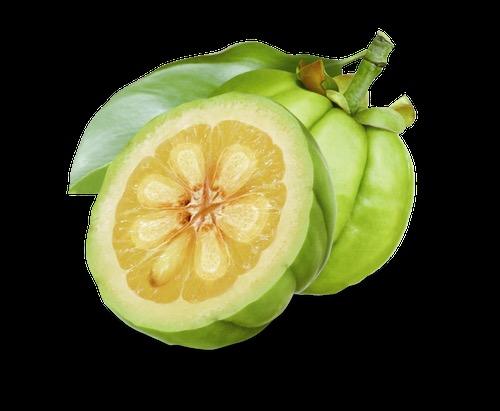


Available dosage form(s)6
• Capsules/Tablets
• Powders
• Liquid extracts
• Chewable/Gummies
• Tea
Typical dosing/serving6
• Research is limited










Workout
• Garcinia extract is standardized to HCA content (usually 50-60% HCA).
• Typical dose: 500-1500 mg of HCA is taken 30-60 minutes before meal, up to three times daily.
Joint aches Digestive problems Menstrual irregularities
Constipation Swelling
MAIN MAIN MAIN
Anh
Khanh Trinh | Student Pharmacist | Spring 2024
Performance Weight Loss Appetite Suppression
Effectiveness
• While there are some small studies reporting weight loss success, the largest and best-designed placebocontrolled study found no significant difference compared to a placebo. Despite contradictory evidence, Garcinia tablets/capsules seem to produce a very modest weight reduction in some obese or overweight people. Still, it is unclear if Garcinia is beneficial for other uses. Studies have only tested these supplements for up to 12 weeks at a time It is suggested to take a few weeks off every three months 6
Safety/ Warnings/ Toxicities
• Insufficient reliable information is available about Garcinia's safety. However, there is some concern about liver toxicity.6

Study Summary
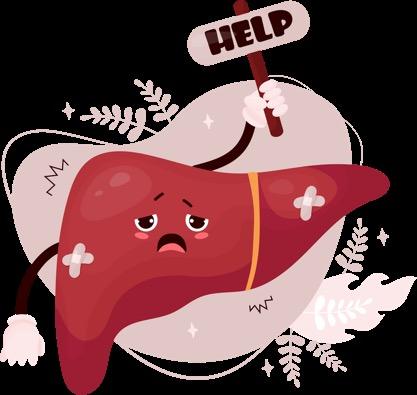

graphic from https://www.canva.com/

Side Effects
Common: diarrhea, upset stomach, headache, nausea6
Serious (Rare): liver toxicity, pancreas inflammation.6
Drug Interactions
Food appears to reduce HCA absorption.6
graphic from https://www.canva.com/
The study, “Dangerous dietary supplements: Garcinia cambogia-associated hepatic failure requiring transplantation,” reports a severe case where a 34-year-old man needed a liver transplant after taking Garcinia cambogia supplements. Despite having no significant medical history or substance or alcohol use, he suffered a serious liver injury from the supplement, which contains HCA, a substance linked to liver damage. The investigation ruled out viral, genetic, and autoimmune causes of liver failure and pointed out that the supplement was identified as the likely cause. This case emphasizes the risks of unregulated dietary supplements and the urgent need for stronger regulation and better awareness among consumers It also suggests that healthcare professionals should carefully consider supplement use when dealing with acute liver injuries, demonstrating the importance of detailed medical history in identifying supplement-related liver toxicity 7
Professional Opinion
“Garcinia Cambogia's effectiveness and safety are argumentative, with concerns about serious liver toxicity and inconsistent weight loss resulting from its main component, HCA. The risks, especially from long-term use, remain unclear. With the limited regulation of the dietary supplement industry, the quality of Garcinia Cambogia products can differ significantly. Therefore, I would recommend cautiously using these supplements, always seeking advice from healthcare professionals, and prioritizing evidence-based weight management strategies ” – Anh Trinh
References
1. National Center for Complementary and Integrative Health Garcinia Cambogia National Institutes of Health Updated December 2020 Accessed March 31, 2024 https://www nccih nih gov/health/garcinia-cambogia
2. H Baky M, Fahmy H, Farag MA Recent Advances in Garcinia cambogia Nutraceuticals in Relation to Its Hydroxy Citric Acid Level A Comprehensive Review of Its Bioactive Production, Formulation, and Analysis with Future Perspectives ACS Omega 2022;7(30):25948-25957 Published 2022 Jul 19 doi:10 1021/acsomega 2c02838
3. Hayamizu K, Ishii Y, Kaneko I, et al Effects of garcinia cambogia (Hydroxycitric Acid) on visceral fat accumulation: a doubleblind, randomized, placebo-controlled trial. Curr Ther Res Clin Exp. 2003;64(8):551-567. doi:10.1016/j.curtheres.2003.08.006
4. Ohia SE, Opere CA, LeDay AM, Bagchi M, Bagchi D, Stohs SJ Safety and mechanism of appetite suppression by a novel hydroxycitric acid extract (HCA-SX) Mol Cell Biochem 2002;238(1-2):89-103 doi:10 1023/a:1019911205672
5. Lim K, Ryu S, Ohishi Y, et al. Short-term (-)-hydroxycitrate ingestion increases fat oxidation during exercise in athletes. J Nutr Sci Vitaminol (Tokyo) 2002;48(2):128-133 doi:10 3177/jnsv 48 128
6. Garcinia cambogia NatMed Pro Therapeutic Research Center Somerville, MA Accessed February 22, 2024 https://naturalmedicines.therapeuticresearch.com/
7. Lunsford KE, Bodzin AS, Reino DC, Wang HL, Busuttil RW. Dangerous dietary supplements: Garcinia cambogia-associated hepatic failure requiring transplantation. World J Gastroenterol. 2016;22(45):10071-10076. doi:10.3748/wjg.v22.i45.10071
GARLIC (ALLIUM SATIVUM)
History
GARLIC ORIGINATES FROM MIDDLE ASIA. IT WAS ONE OF THE MOST USED REMEDIES IN CHINA SINCE 2700 BC. IT WAS USED FOR DIFFERENT PURPOSES IN CHINA, INDIA, EGYPT, ISRAEL, GREECE, ETC., WITH THE SAME END GOAL OF HEALING PEOPLE.
Pharmacology
Why Garlic?
GARLIC IS COMMONLY USED AND PROMOTED AS A SUPPLEMENT FOR CONDITIONS RELATED TO THE BLOOD VESSELS AND HEART, INCLUDING HIGH BLOOD PRESSURE AND HIGH CHOLESTEROL. IT HAS ALSO BEEN SAID TO HOLD ANTIBACTERIAL PROPERTIES.
THE GENERATION OF HYDROGEN SULFIDE IS WHAT CREATES A CARDIOPROTECTIVE EFFECT. ERYTHROCYTES CONVERT GARLIC-DERIVED ORGANIC POLYSULFIDES INTO HYDROGEN SULFIDE. THIS RELAXES VASCULAR SMOOTH MUSCLE, INDUCES VASODILATION OF BLOOD VESSELS, AND SIGNIFICANTLY REDUCES BLOOD PRESSURE.
Dosing
COMMON DOSAGE FORMS: TABLETS, CAPSULES, OIL, POWDER, RAW GARLIC CLOVES FOR HEART HEALTH: TAKE 500-1500MG OF ANY DOSAGE FORM BY MOUTH DAILY, OR EAT 2 RAW GARLIC CLOVES DAILY.
ALEXANDRAUNGUREANU, STUDENTPHARMACIST, SPRING2024
Effectiveness
IT CAN TAKE ANYWHERE BETWEEN 3 WEEKS AND 3 MONTHS TO SEE EFFECTS OF GARLIC. IT HAS SHOWN TO BE EFFECTIVE IN LOWERING BLOOD PRESSURE, PLATELET AGGREGATION, AS WELL AS INCREASING FIBRINOLYTIC ACTIVITY.
Safety/Side Effects/ Interactions
SIDE EFFECTS: BREATH AND BODY ODOR, HEARTBURN, UPSET STOMACH
WARNINGS : GARLIC MAY INCREASE RISK OF BLEEDING. UNKNOWN EFFECTS OF CHILDREN USING GARLIC LONGER THAN 8 WEEKS.
DRUG INTERACTIONS: GARLIC SUPPLEMENTS MAY INTERACT WITH ANTICOAGULANTS, HIV DRUGS, AND OTHER DIETARY HERBS.
Article Review
IN A REVIEW OF GARLIC AND ITS EFFECTS ON THE HEART, IT WENT OVER DATA THAT WAS GATHERED FROM DIFFERENT STUDIES. THE DATA THAT WAS SHOWN INDICATED THAT GARLIC IS NOT AS EFFECTIVE AT LOWERING BLOOD CHOLESTEROL. INSTEAD, IT IS MORE EFFECTIVE AT LOWERING BLOOD GLUCOSE, BLOOD PRESSURE, AND PLATELET AGGREGATION.
Opinion References
GARLIC HAS BEEN USED FOR CENTURIES AS A HEALING AGENT. WITH DATA SHOWING THAT IT CAN BE EFFECTIVE IN PROTECTING THE HEART, I WOULD RECOMMEND GARLIC AS A SUPPLEMENT TO PATIENTS THAT WOULD BENEFIT FROM IT. - AUNGUREANU
BANERJEESK,MAULIKSK EFFECTOFGARLICONCARDIOVASCULAR DISORDERS:AREVIEW NUTRJ 2002;1:4 PUBLISHED2002NOV19 DOI:101186/1475-2891-1-4
MIKAILIP,MAADIRADS,MOLOUDIZARGARIM,AGHAJANSHAKERIS, SARAHROODIS.THERAPEUTICUSESANDPHARMACOLOGICAL PROPERTIESOFGARLIC,SHALLOT,ANDTHEIRBIOLOGICALLYACTIVE COMPOUNDS IRANJBASICMEDSCI 2013;16(10):1031-1048
PETROVSKABB,CEKOVSKAS EXTRACTSFROMTHEHISTORYAND MEDICALPROPERTIESOFGARLIC.PHARMACOGNREV. 2010;4(7):106-110.DOI:10.4103/0973-7847.65321
GINGER
Spring 2024
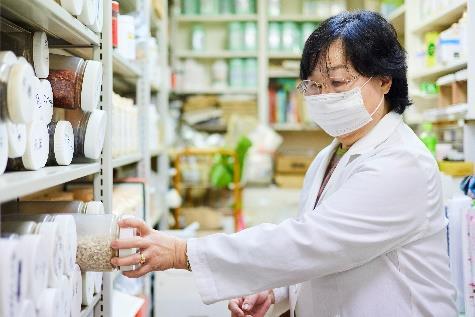
Background
Ginger is the underground stem of a flowering plant and is used as a spice in many cuisines, and for its medicinal properties. Its origin can be traced back to Southeastern Asia (China and India) where it is used in Traditional Chinese medicine, Ayurveda and in their respective cuisines.
Purpose
Ginger supplements are mainly used for nausea symptom relief, digestive support, antiinflammatory purposes, menstrual cramps, osteoarthritis, diabetes, and general cardiovascular health and immune support. Studies also suggest it can be beneficial to use for weight loss by increasing metabolism and reducing appetite.
Pharmacology/ Mechanism of Action
Ginger contains active ingredients like gingerol, gingerdione, shogaol, and sesquiterpene and monoterpene volatile oils, which possess various pharmacological properties such as pain relief, antiinflammatory effects, and sedation. These compounds are absorbed in the small intestine and metabolized in the liver, forming metabolites like glucuronide or sulfate conjugates. They circulate in the bloodstream and can cross the blood-brain barrier. Metabolites are primarily excreted in urine, with a half-life of 0.5-3 hours for key compounds like 6-gingerol, 8-gingerol, 10-gingerol, and 6-shogaol

Media-amazon.com. Published 2023. https://m.mediaamazon.com/images/G/01 /apparel/rcxgs/tile._CB483369110 _.gif
Vachharajani – Student Pharmacist
Dosage Forms/ Dosing
Ginger supplements are mainly administered orally; but have been used in many topical formulations such as mouthwash, gels, and essential oils (aromatherapy). Most commonly available as capsules but is also available as concentrated extracts and powder. The standard capsules are available in either 250mg or 500mg dosing taken 1-4 times daily. It is typically taken in 0.5-3 grams daily dosing for up to 12 weeks with various outcomes depending on the condition being treated. The dosing for children is 0.75-2 grams daily for 3-4 days.
Cloudfront.net. Published 2024. Accessed April 2, 2024.
https://d2cbg94ubxgsnp.clooudfront.net/ Pictures/2000xAny/6/3/7/108637_ginger _shutterstock_291717662.jpg

ZINGIBER OFFICINALE
Aayush

Opinion
Personally, I think that ginger is a safe and very impactful supplement that can be taken medically for certain disease states at the physician’s discretion, but also provides benefits such as its antioxidative properties when used in daily cooking or consumed in moderation.
-A Vachharajani
Effectiveness
Ginger supplements, taken orally, typically take around 30 minutes to 1 hour to be metabolized before any effects can be observed. The effectiveness varies depending on the specific symptom or indication. For nausea, relief can be noticeable within 30 minutes to a few hours. However, for anti-inflammatory, analgesic effects, or in conditions like diabetes or osteoarthritis, longer-term therapy is generally needed to observe significant effects.
Safety/Warnings/Toxicity
Ginger supplements are generally considered safe for oral and topical use, even in children, during pregnancy, and lactation. It's recommended to consume ginger moderately through food during pregnancy and lactation. While the risk of allergic reactions is low, they may manifest as skin rashes, itchiness, or difficulty breathing. Overall, adherence to recommended doses and consideration of individual health conditions is essential
Supplemental Article Summary
The article "The Amazing and Mighty Ginger" discusses various health benefits of ginger, including its different preparations, antioxidant and anti-inflammatory effects, anti-nausea properties, anti-carcinogenic potential, and possible cardiovascular benefits. The study acknowledges that many existing research studies on ginger are descriptive rather than mechanistic, emphasizing the need for further research on kinetics, long-term effects, and molecular targets.
Food/Drug Interactions
Caution as there are moderate interactions with anticoagulant/antiplatelet drugs, diabetes medications, calcium channel blockers, cytochrome P450 substrates, and Pglycoprotein substrates. Precautions include discontinuing ginger two weeks before surgery due to bleeding concerns. Caution is advised with spicy/irritant foods, as heartburn or gastrointestinal symptoms may worsen.
Adverse Effects
When taken orally, the most common side effects include abdominal discomfort, burping, diarrhea, heartburn, or mouth or throat irritation. These symptoms are generally mild. Ginger may cause sedation, drowsiness or dizziness, hives, bruising or flushing or formation of rashes. In one patient the use of ginger resulted in a mild arrhythmia during a clinical trial.
Despite the lack of standardization in ginger supplements, their safety is evident, though the advisability of consuming components like [6]gingerol remains uncertain. Ginger exhibits promise as an antinausea agent, anti-inflammatory, and potentially anticancer, with observed benefits in pregnancyrelated nausea and cardiovascular health. While specific biological targets are not fully understood, the article highlights ginger's diverse pharmacological properties, positioning it as a safe and impactful option in various applications.
References:
1. Bode AM, Dong Z. The Amazing and Mighty Ginger. PubMed. Published 2011. https://www.ncbi.nlm.nih. gov /books/ NBK92775/#ch7_sec13
2. OpenAthens / Sign in. login.openathens.net. https://naturalmedicinestherapeuticresearchcom.eu1.proxy.openathens. net/ databases/ food
3. Slattery E. Ginger Benefits. www.hopkinsmedicine.org. Published 2023. https://www.hopkinsmedicine. org/ health/wellness-andprevention/ginger-benefits
4. WebMD. Ginger: Uses, Side Effects, Interactions, Dosage, and Warning. Webmd.com. Published 2009. https://www.webmd.com/ vitamins/ ai/ingredientmono961/ginger
5. Mao QQ, Xu XY, Cao SY, et al. Bioactive Compounds and Bioactivities of Ginger (Zingiber officinale Roscoe). Foods. 2019;8(6):185. doi:https://doi.org/10.3390/ foods8060185
ZINGIBER OFFICINALE
Glucosamine
(3R,4R,5S)-3-Amino-6-(hydroxymethyl)oxane-2,4,5triol
Ploy Rucha-intra (Student Pharmacist) Complementary and Alternative Medicine Spring 2024
In 1876, Georg Ledderhose, a medical student at Strasbourg University, isolated glucosamine from chitin in cartilage, naming it glycosamin. The synthesis of glucosamine was later reported by chemist Emil Fischer and his student Hermann Leuchs at the University of Berlin in 1902.
available over-the-counter and is commonly used to alleviate inflammation and associated pain in osteoarthritis. It is believed to support joint health by contributing to the maintenance and repair of cartilage.
Glucosamine serves as a precursor to glycosaminoglycans, essential components of joint cartilage. By providing a building block for glycosaminoglycan synthesis, it helps slow the progression of osteoarthritis and alleviate symptoms of joint pain. These glycosaminoglycans play a crucial role in maintaining joint cartilage elasticity, strength, and flexibility. Tablets: 1500 mg each - Take 2 tablets with 8-12 oz of water. Capsules: 1000-1500 mg each - Take 2 capsules with 8-12 oz of water. Powder: 1000 mg - Take ⅓ tsp one to three times daily.
History Why do people use it? Pharmacology Dosage Form 1 2 1,3 1,3 2 www.canva.com www.canva.com www.canva.com www.canva.com
Interactions
Agents with Antiplatelet Properties:
Glucosamine may enhance the antiplatelet effect of agents with antiplatelet properties.
Warfarin:
Glucosamine may enhance the anticoagulant effect of warfarin.
www.canva.com
Experience the difference in 3-8 weeks!
Results vary from person to person
Toxicology
no data is available. Use with care in individuals with shellfish allergies or asthma.
Critique
www.canva.com
“Glucosamine might not be the ultimate solution for joint pain. There are alternative products in the market that could potentially offer more effective solutions. It appears that the toxicology and adverse effects of glucosamine haven't been thoroughly studied. Nevertheless, individual responses vary, and if patients express interest in trying glucosamine, I won't restrict them. I see it as an option, and I'll closely monitor lab values and pain relief reports for a more personalized approach to their care.” - Ploy Rucha-intra
Such as itching and gastric discomfort (e.g., diarrhea, heartburn, nausea, vomiting), which can be eased by taking the product with food. Exercise caution when administering to individuals with poorly controlled diabetes or liver disease.
Side effect Clinical study
In a study involving 24 subjects with knee osteoarthritis, no significant differences in osteoarthritis grade were observed between groups (p=1.00). There were also no significant differences in outcome measures at 2 and 4 weeks postintervention (p>0.05), except for changes in segmental lean mass of the right leg at 2 weeks and the left leg at 4 weeks (p<0.05). Glucosamine and chondroitin sulfate supplementation for 4 weeks did not provide additional benefits.
Reference:
1
2
Glucosamine. Lexi-Drugs. Lexicomp. Wolters Kluwer Health, Inc. Riverwoods, IL. Accessed February 23, 2024. http://online.lexi.com
Henrotin Y, Mobasheri A, Marty M. Is there any scientific evidence for the use of glucosamine in the management of human osteoarthritis?. Arthritis Res Ther. 2012;14(1):201. Published 2012 Jan 30. doi:10.1186/ar3657
3
Glucosamine Uses, Benefits & Dosage Herbal Database. Drugs.com. Accessed February 23, 2024. https://www.drugs.com/npp/glucosamine.html.
McKnight PE, Kasle S, Going S, et al. A comparison of strength training, self-management, and the combination for early osteoarthritis of the knee. Arthritis Care Res (Hoboken). 2010;62(1):45-53. doi:10.1002/acr.20013
4 1 1,3 1,31 4 1 1 1,3
www.canva.com
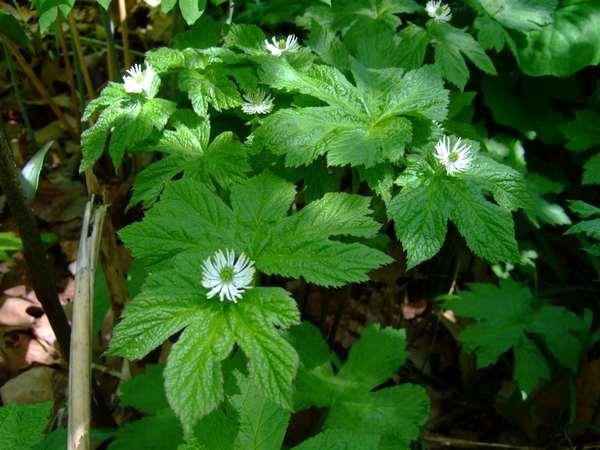





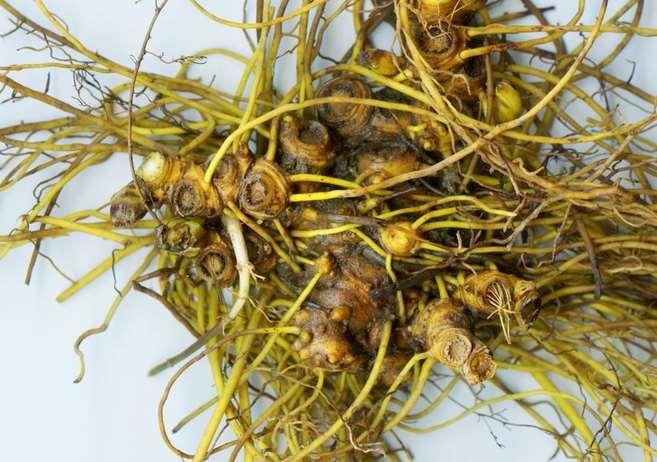








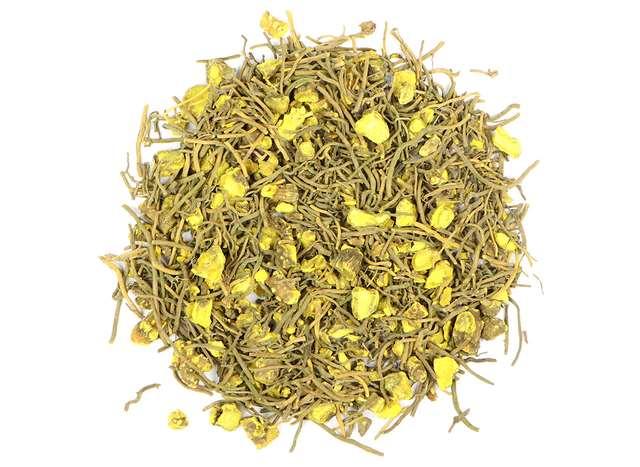



Grape Seed
Vitis vinifera L. - A self-pollinating plant that adheres to nearby surroundings as it grows on vines, before shedding its leaves when mature It is native to southern Europe and western Asia, with the first health benefits having been documented by Ancient Egyptians, Romans, and Greeks after drinking wine made from grapes Grape Seed extract has also been marketed in France to treat venous and capillary disorders, while Japan uses grape seed as a food additive and antioxidant.
COMMON USES
Uses derive from anti-inflammatory, cardioprotective, antimicrobial, and anticancer properties in the product and may be used for the following conditions (incomplete list):
ADHD
Alopecia
Cancer Prevention
Cardiovascular Disease
Chronic Venous Insufficiency
Endometriosis
Macular Degeneration
Peripheral Vascular Disease
Retinal Disease
Varicose Veins
DOSAGE FORMS
Grape seed extract is usually found in oral tablets and capsules. Grape seed oil might be packaged in a liquid formulation or as an oil
DOSING & REGIMEN
No established dosage for grape seed products has been determined. Recommended dosing regimens vary with each product and formulation, and may be specifically tailored depending on the condition being treated. Dosing instructions found on the product’s package label should be followed to ensure accurate and appropriate use of grape seed Average dose may range from: 150-2000 mg/day

https://www renewskinco com/blogs/i/grape-seed-extract-benefit-your-skin
PHARMACOLOGY & MECHANISM OF ACTION
Grape seed contains several phenolic compounds, fatty acids (85-90% of overall composition), and vitamins., with biologically active compounds including proanthocyanidins and anthocyanins. Proanthocyanidins act as free radical scavengers within the body, showcasing antioxidant properties that protect cells from oxidative stress, while also inducing the expression of VEGF to initiate wound healing. The phenolic compounds also help with speeding up the wound healing process, in which both aforementioned components simultaneously control inflammation
Alternative pharmacology and mechanism of action proposals have not been confirmed and/or are still being experimentally tested.
Ashleigh Griffin, Student Pharmacist SPRING 2024
o x
PROFESSIONAL OPINION
- From reviewing various scientific journals and natural supplement databases, there is an overall lack of credible studies or experimental data on grape seed products, along with insufficient information regarding any side effects, toxicities, or contraindications Both personally and professionally, I would not feel comfortable or confident recommending this product to patients before they have had discussions with their doctor(s). - A. Griffin
EFFICACY
No efficacy has been established with grape seed treating any medical conditions. Grape seed products should not be taken in replacement of prescription medications, as the FDA has not approved the use of products containing grape seed.
SAFETY - WARNINGS & TOXICITY
No toxicity has been reported with acute doses in humans. Grape seed products should not be taken before any surgical procedures, as there is an increased risk of bleeding.
ADVERSE & SIDE EFFECTS
Contraindicated with known hypersensitivity to grape products, but generally well tolerated otherwise. Side effects include, but are not limited to:
Diarrhea, upset stomach, nausea, vomiting
Dry mouth, sore throat, cough
Headache, dizziness, itchy scalp
Muscle pain, weakness

https://www chemsrc com/en/cas/84929-27-1 1197441 html
INTERACTIONS - FOOD & DRUG
Dual anticoagulant/antiplatelet activity of Grape Seed may cause bleeding to occur from interacting with and enhancing adverse or toxic effects of:
Anticoagulants
Antiplatelets
NSAID’s
Salicylates
Thrombolytics
Possible CYP450 enzyme activity modulation from interactions with other herbs May increase serum concentrations of Dextromethorphan.
CLINICAL STUDY SUMMARY
The study included a systematic review and meta-analysis of published controlled trials to assess the claims of grape seed extract having beneficial effects on oxidative and inflammation. Results concluded that there are positive effects on oxidative stress, but only mildly beneficial (mostly neutral) effects on inflammation. The type, dose, and duration of grape seed extract supplementation may also affect the degree of benefits seen on oxidative stress.
REFERENCES
Cytochrome P450 Enzyme-Mediated Herbal Drug Interactions (Part 1) EXCLI Journal Accessed March 19, 2024
https://www.ncbi.nlm.nih.gov/pmc/articles/PMC4463967/#:~:text=C YP%20mediated%20herbal%20drug%20interactions,glycoprotein%20( P%2Dgp)
Grape Seed Extract Johns Hopkins Medicine Accessed March 19, 2024.
https://johnshopkinshealthcare staywellsolutionsonline com/YourFa mily/Men/19,GrapeSeedExtract
Grape Seed Extract Natural Products Database Lexi-Comp Accessed March 19, 2024. http://online.lexi.com
Grape Seed Extract: Having a Potential Health Benefits. Journal of Food, Science, and Technology Accessed March 19, 2024 https://www ncbi nlm nih gov/pmc/articles/PMC7054588/
SEED, CONT. SPRING 2024 o x
GRAPE
Horny Goat Weed
Nicole Wasyliw: Purdue Kinesiology Student Spring 2024
Scientific Name: Epimedium, Barrenwort
Background: Horny goat weed comes from herbs in the Epimedium genus. This plant is found throughout Asia and certain parts of Europe and Africa. It has been used in traditional medicine as a tonic, aphrodisiac, and an antirheumatic agent for centuries.
Common Uses: People commonly use horny goat weed to treat erectile dysfunction or other sexual problems, brittle bones, health problems after menopause, and other conditions. It has also been used for treating asthma and cardiovascular disease.
Pharmacology: The parts of the plant used in horny goat weed are the leaves and the stems. The most abundant compound found in this supplement is icariin which is a glycoside that is formed out of the prenylflavonoid icaritin and glucose and rhamnose. The icariin in the horny goat weed is absorbed in the duodenum and the ileum. Peak levels of this substance are reached about 4 hours after oral intake of horny goat weed and they can last for up to 48 hours.
Available Forms: Horny goat weed is typically available in different tablets and capsules.
Typical Dosing: The tablets and capsules typically range from 250 to 500 mg and one capsule is to be taken daily.2 Keep in mind that there is not enough reliable information to know what an appropriate dose of this supplement may be.
Effectiveness: Overall, there is not enough reliable evidence to support that horny goat weed is effective for the treatment of any of its common uses. There are a few small but low-quality studies that show horny goat weed may modestly improve osteoporosis patients’ bone mineral density.
Safety: Horny goat weed can be safely taken for up to two years, but there are some safety concerns if the person is pregnant, breast-feeding, has bleeding disorders, hormone sensitive conditions, or if they are about to have surgery.
Side Effects: Horny goat weed typically does not have any adverse effects but some of the minor side effects can include abdominal discomfort and nausea. Some other possible adverse effects could include dizziness, a dry mouth, nosebleeds, thirst, or vomiting.
Interactions: Horny goat weed has the possibility of interacting with many different drugs and supplements. In combination with anticoagulant/antiplatelet drugs horny goat weed may increase risk of bleeding. Interactions with antihypertensive drugs may increase risk of hypotension. Interactions with estrogens could increase their therapeutic and adverse effects. In terms of interactions with
supplements, horny goat weed interactions with anticoagulant/antiplatelet herbs and supplements may increase risk of bleeding. Interactions with caffeine-containing herbs and supplements could reduce the clearance of caffeine. Interactions with herbs and supplements that have hypotensive effects can increase the risk of hypotension.
Summary: One article that was read was about if there is an effect of horny goat weed on the liver and if it causes any sort of liver injury. Orally ingested horny goat weed so far has not been linked to any apparent injury of the liver. Horny goat weed is commonly combined with other botanicals as well. In clinical trials that are small, horny goat weed has not been seen to cause any serum enzyme elevations or acute liver injury. Though there have been a few reports of liver injury in patients who combine horny goat weed with other substances, it has not been clear if horny goat weed was the cause of this injury. The chemical constituents of horny goat weed have not been shown to be toxic to the liver.
Opinion: Overall, I do not think that horny goat weed is effective or useful because there is very limited evidence that it does anything at all. Also, with all the interactions that it could have with other drugs, medications, or supplements, I do not think it would be a good idea to use this product. ~N Wasyliw

Vasquez I. What is horny goat weed? Health. Published May 26, 2023. Accessed April 3, 2024. https://www.health.com/hornygoat-weed-7501306.
References:
1.Horny Goat Weed: MedlinePlus Supplements. Medlineplus.gov. Published November 20, 2022. Accessed February 14, 2024. https://medlineplus.gov/druginfo/natural/699.html
2.Bethesda. LiverTox: Clinical and Research Information on Drug-Induced Liver Injury. National Library of Medicine; 2012. Accessed February 14, 2024. https://www.ncbi.nlm.nih.gov/books/NBK583203/
3.Horny Goat Weed. naturalmedicines.therapeuticresearch.com. Published November 20, 2022. Accessed February 14, 2024. https://naturalmedicines-therapeuticresearchcom.eu1.proxy.openathens.net/databases/food,-herbs-supplements/professional.aspx?productid=699
Kava Kava
Piper Methysticum
Student Pharmacist: Alison Casey
Background:
Kava Kava is a scrub in the pepper family. It is commonly called kava or ava pepper. It is traditionally used in ceremonially and recreationally actives. Used in south pacific cultures for at least 1500 years.
Why do people want to use Kava Kava?
- It is generally used for anxiety, stress, restlessness, tension, agitation and hypnotic.
How much should I take?
The liquid you should only take a small amount since it is concentrated. The max dose you should take is 250mg. The effective dose is 70-250mg.
Dosage Form: tablet, tea, tincture liquid, and capsules
Mechanism of Action:
- Blockage of voltage gated sodium ion channels
- Enhance ligand binding to gamma amino butyric acid (GABA) type A receptor.
- Decrease excitatory neurotransmitter release.
- Decrease neuronal reuptake of norepinephrine.
- Inhibit CYP450
https://www.pacificbotanicals.com/store/product942.html.

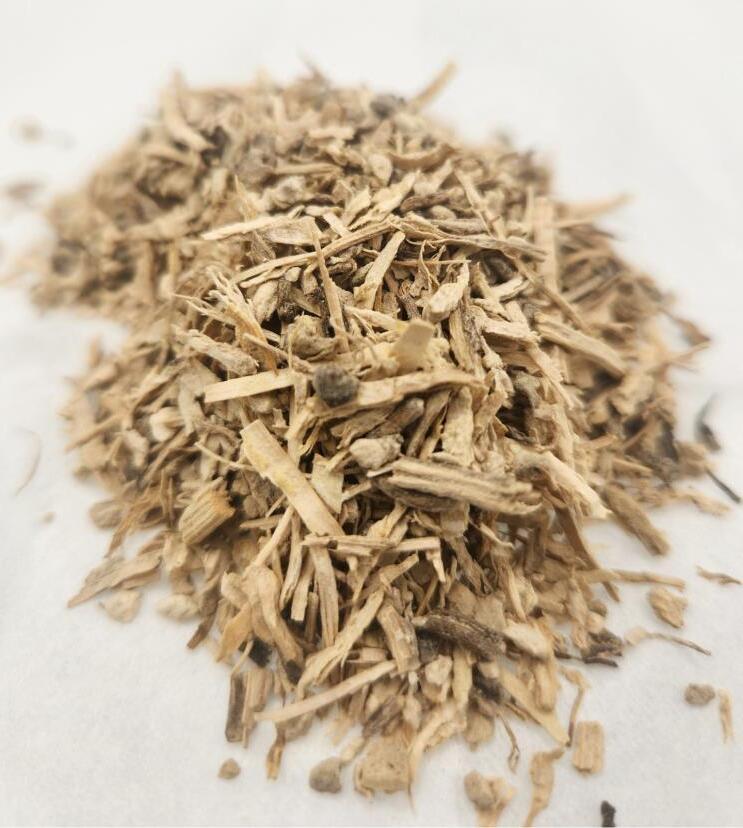 1. Kava kava root - grown without chemicals. Pacific Botanicals. Accessed April 7, 2024.
1. Kava kava root - grown without chemicals. Pacific Botanicals. Accessed April 7, 2024.
Spring 2024
1. Kava Kava: Uses, benefits, risks, dosage, and interactions. Medical News Today. December 18, 2017. Accessed April 7, 2024. https://www.medicalnewstoday.com/articles/3240 15.
Kava Kava: Effectiveness
How long does it take to feel an effect?
- Takes anywhere from thirty minutes to two hours to be effective.
Interaction:
Do not use with drugs that need CYP450 to be metabolized. Do not used with CNS depressant drugs.
Safety/ Toxicity:
FDA has linked Kava Kava to liver failure. A study followed a patient on Kava Kava. Patient experienced liver toxicity until a liver transplant was received and they stopped taking Kava Kava. Other symptoms are hair loss and yellow skin. This product is banned in Europe and Canada
Article Summary: Kava can be used to help with anxiety, stress, and hypnotic. When used in small amounts it can be beneficial to these symptoms. With all these benefits it does have severe hepatotoxicity. Consult a doctor if you want to use this product and be careful with the amount you take.
(Healthline.com)
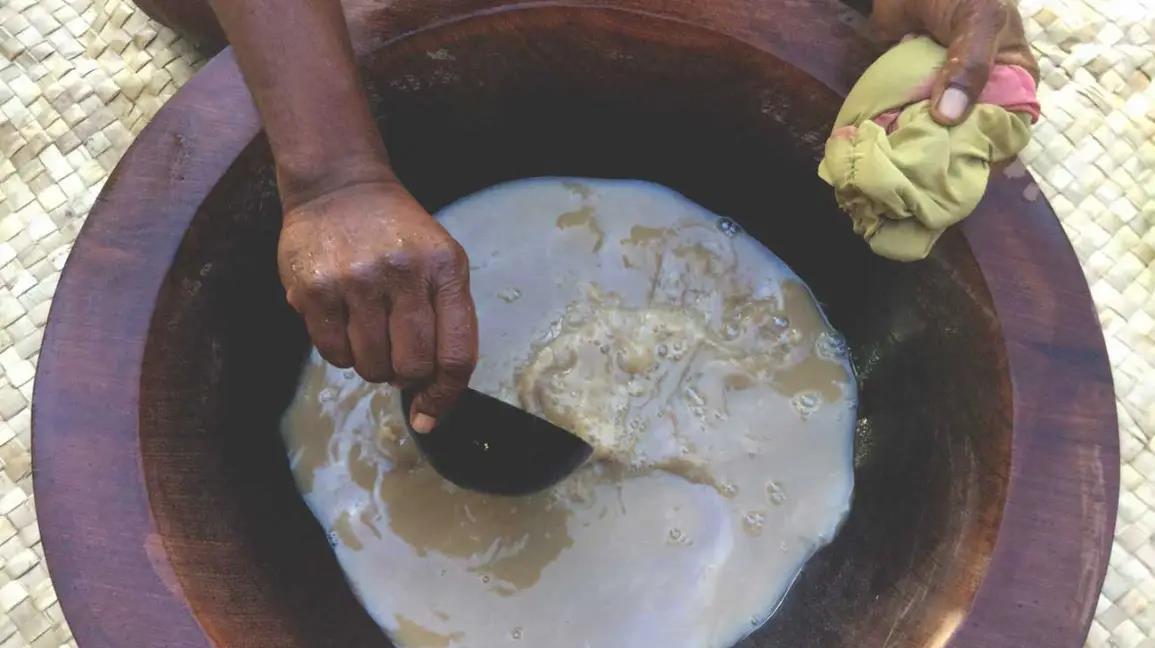
My opinion: You should not take this product. The cons of this product outweigh the pros. There are better and healthier methods to deal with anxiety and stress. ADC
E.Ernst. ScienceDirect Name of the website. Updated 2005. Date accessed February, 23rd 2024. https://www.sciencedirect.com/topics/agricultural-and-biological-sciences/pipermethysticum#:~:text=Kava%20kava%20(Piper%20methysticum)%20is,commonly%20used%20as%20anxiolytic%20agent
National Library of Medicine. Some Drugs and Herbal products. National library of Medicine: national center for biotechnology information. Date site was updated 2016. Date accessed February 23rd , 2024. https://www.ncbi.nlm.nih.gov/books/NBK350450/#:~:text=The%20kava%20plant%20is%20indigenous,century%20(WH O%2C%202007)
Singh, Yadhu and Singh, Nirbhay. Therapeutic potential of kava in the treatment of anxiety disorders. PubMed. Date accessed February 23rd , 2024. https://pubmed.ncbi.nlm.nih.gov/12383029/#:~:text=The%20pharmacological%20properties%20of%20kava,reduced%20 neuronal%20reuptake%20of%20noradrenaline%20
Van De Walle, Gavin. Kava Kava: Benefits, Side Effects and Dosage. Healthline. Date site was updated February 10th , 2018. Date accessed February 23rd, 2024. https://www.healthline.com/nutrition/kava-kava
1. Best-country: Drinks of Tonga. World Travel Guide: Best Country. October 21, 2019. Accessed April 7, 2024. https://www.best-country.com/en/australia/tonga/drink.
MATE DE COCA (COCA TEA)
JACKSON L. GUM
STUDENT PHARMACIST
SPRING 2024

HTTPS://WWW.FLATICON.CO M/FREE-ICON/MATE-DECOCA 3338846
COMMON USES
MILD STIMULANT
LOCAL ANESTHETIC BOOST ENERGY
ALTITUDE SICKNESS
INDIGESTION
MOOD LIFTING
PHARMACOLOGY
COCA TEA IS MADE BY SUBMERGING COCA TEA IN HOT WATER. UNLIKE SNORTING COCAINE, COCA TEA DOES NOT CAUSE AN INSTANT SENSATION. THIS IS CONSIDERED A SYMPATHOMIMETIC STIMULANT. THIS IS BECAUSE IT RELEASES AND BLOCKS THE REUPTAKE OF DOPAMINE AND NOREPINEPHRINE IN THE CENTRAL NERVOUS SYSTEM. IT IS RAPIDLY METABOLIZED BY LIFE WITH COCAINE, BEING ITS MAJOR METABOLITE.

COCA IS THE RAW INGREDIENT USED IN COCAINE PRODUCTS. HOWEVER, MANY COUNTRIES USE THE LEAVES OF THIS PLANT FOR MEDICINAL USES. THIS IS SEEN PREVALENTLY IN SOUTH AMERICA. WHILE IT IS USED IN SOME COUNTRIES, MANY OTHERS SUCH AS UNITED STATES HAVE MADE IT AN ILLICIT SUBSTANCE.
BACKGROUND SERVINGS
THE TEA IS OFTEN PACKAGED IN INDIVIDUAL BAGS WHICH CONTAIN 1 GRAM OF PLANT MATTERIAL.
DOSAGE FORMS
HTTPS://EN.WIKIP EDIA.ORG/WIKI/C OCA
HERBAL/DIETARY SUBSTANCE TEA LEAVES TEA 1 1 (Erythroxylum
3 2 1
novgranatense var. truxillense)
EFFECTIVENESS
THIS SUPPLEMENT HAS NOT BEEN TESTED FOR EFFECTIVENESS. HOWEVER, LIMITED RESEARCH HAS CONCLUDED IT TO BE A MILD STIMULANT, SIMILAR TO A CUP OF COFFEE. DRINKING COCA TEA IS ASSOCIATED WITH POSITIVE DRUG SCREENINGS FOR COCAINE. THIS WAS SEEN IN A GREAT BRITAIN JOKEY TEAM, WHERE SEVERAL MEMBERS TESTED POSITIVE OVER SEVERAL-YEAR SPAN.
INTERACTIONS
SAFETY
THIS SUBSTANCE IS NOT FDA-APPROVED SO INGREDIENTS ARE NOT REGULATED. SOME MANUFACTURES CLAIM TO BE DECOCANIZED. HOWEVER, THERE IS NO STANDARD. THERE IS LITTLE TOXICOLOGY AND PHARMACOLOGY ON COCA TEA SO USERS TAKE RISKS WITH THE PRODUCT.
SOME SIDE EFFECTS FROM THE METABOLITE COCAINE INCLUDE MIGRAINES, SEIZURES, STROKES, HEART ATTACKS, HYPERTENSION, AND LIVER/KIDNEY FAILURE
DO NOT TAKE IT IN COMBINATION WITH ALCOHOL AND NIFEDIPINE DUE TO MAJOR INTERACTIONS. THERE ARE ALSO MODERATE INTERACTIONS WITH DIABETES AND HYPERTENSION MEDICATIONS.
SUMMARY
IN A SCIENTIFIC JOURNAL, DIFFERENT COCA TEAS WERE STEEPED TO TEST THE AMOUNT OF ALKALOIDS PRESENT IN THESE TEAS. IT WAS FOUND VARIOUS AMOUNTS OF COCAINE, ECGONINE ETHYL ESTER, BENZOYLECGONINE, AND TRANS-CIS-NAMOYLCOCAINE WERE PRESENT. CAFFEINE AND NICOTINE WERE NOT DETECTED.3
PERSONAL STATMENT
I FEEL THAT HIS PRODUCT IS JUSTIFIED IN BEING ILLEGAL IN THE UNITED STATES. THERE IS SO MUCH WE DO NOT UNDERSTAND ABOUT THIS PRODUCT. ALSO, IT IS A PRECURSOR TO A DANGEROUS CONTROLLED SUBSTANCE. I THINK THE RISKS OUTWEIGH THE BENEFITS OF THIS PRODUCT. I PERSONALLY LIKE TO STAND ON THE SIDE OF CAUTION.~ J GUM
REFERENCES
1. ANCIENT HERBAL PLANT. THE UNIVERSITY OF SYDNEY. ACCESSED FEBRUARY 23, 2024. HTTPS://WWW.SYDNEY.EDU.AU/SCIENCE/NEWS-ANDEVENTS/2021/01/22/ANCIENT-HERBAL-PLANT.HTML.
2- COCA - AN OVERVIEW | SCIENCEDIRECT TOPICS.” WWW.SCIENCEDIRECT.COM, WWW.SCIENCEDIRECT.COM/TOPICS/PHARMACOLOGYTOXICOLOGY-AND-PHARMACEUTICALSCIENCE/COCA#:~:TEXT=THE%20EFFECTS%20OF%20DRINKING% 20COCA. ACCESSED 24 FEB. 2024. 3-JENKINS, AMANDA J., ET AL. “IDENTIFICATION AND QUANTITATION OF ALKALOIDS IN COCA TEA.” FORENSIC SCIENCE INTERNATIONAL, VOL. 77, NO. 3, FEB. 1996, PP. 179–189, HTTPS://DOI.ORG/10.1016/0379-0738(95)01860-3.
4-“COCA: USES, SIDE EFFECTS, INTERACTIONS, DOSAGE, AND WARNING.” WEBMD.COM, 2019, WWW.WEBMD.COM/VITAMINS/AI/INGREDIENTMONO-748/COCA.
3 4 2
4
Shelbi Cannon
Student
pharmacist
Spring 2024
Melatonin
Background
Low
DoseMelatonin Gummies1mgTastiest Proprietary Formula Amazon.com.
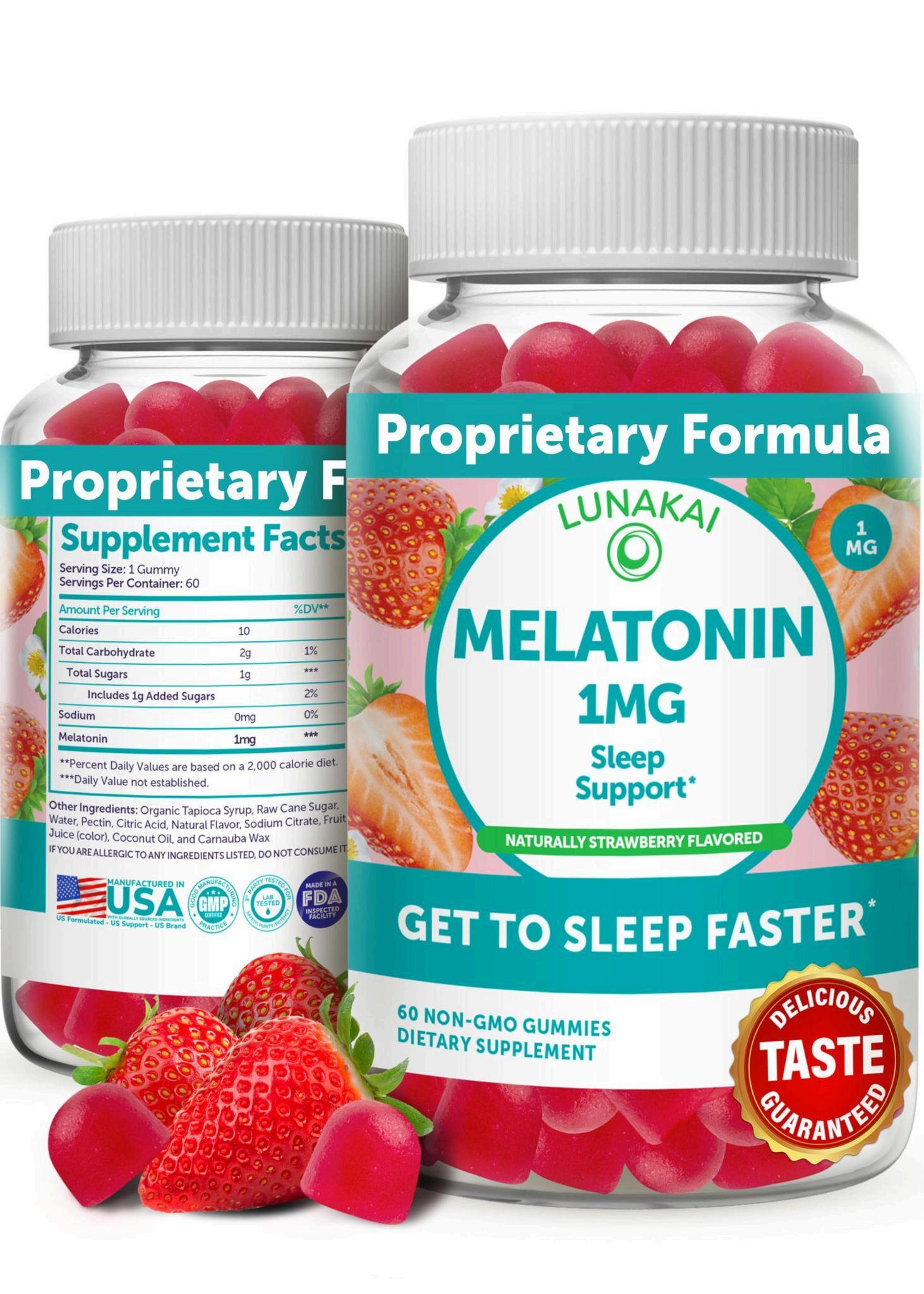
https://www.google.com/url?sa=i&url=https%3A%2F%2Fwww.amazon.com%2Fmelatonin-1mg-gummies-chewable-v egan%2Fdp%2FB08M112L5D&psig=AOvVaw3sJ4UQltfrkcK2Pu_xkvgM&ust=1712432516622000&source=images &cd=vfe&opi=89978449&ved=0CA0QjhxqFwoTCOD_rbPqq4UDFQAAAAAdAAAAABAE PublishedFebruary24, 2024.AccessedApril3,2024.
It was discovered in 1958 by Aaron Lerner, and extracted from the bovine pineal gland It is synthesized by pinealocytes from the amino acid tryptophan and is secreted in the pineal gland. Its activity is elevated in darkness.
Common Uses
Melatonin is commonly used for Circadian rhythm disorders in the blind, Delayed Sleep-Wake Phase Disorder, Insomnia, Jet lag, and childhood sleep disorders
Pharmacology
Two receptor types are activated by Melatonin: high-affinity ML1 and low-affinity ML2 receptors. These are widely present in the pituitary gland and hypothalamus, which control the circadian clock
Dosage Forms
Oral tablets or disintegrating tablets are commonly used for adults Chewable gummies are also available for children
Dosing
Dosage typically begins at 1mg taken about an hour before bed, and it is not recommended to exceed 10mg at a time
Effectiveness and Duration
It is recommended to take 1-2 hours before bed to be effective, specifically with dark lighting It can be used up to 1-2 months but should be stopped to evaluate sleep pattern change
Safety/Warnings
It can cause daytime drowsiness–do not drive within 5 hours of consumption Do not use if you have an autoimmune disease Avoid alcohol and caffeinated products
Side effects/Adverse effects
Headaches, dizziness, nausea, and drowsiness are common side effects. It may cause mild anxiety, feelings of depression, confusion, irritability, and reduced alertness
Interactions
Interactions include anticoagulants, anti-platelets, blood pressure medication, contraceptives, immunosuppressants, anticonvulsants, diabetes medication, seizure medication, and Fluvoxamine.
Melatonin Study
Published in February 2023, researchers at University of Mississippi tested 25 melatonin gummy products for melatonin, CBD, and serotonin content. Serotonin was not detected, but only 3 products were within a ten percent threshold of the claimed melatonin content, and 5 products had substantial CBD content. The study claimed that the melatonin products were inaccurately labeled and may cause decreased or increased dosing compared to claimed quantity, ranging from 17 percent to 478 percent difference. This could be substantially dangerous for children specifically
Personal/Professional Opinion
I believe melatonin to be anecdotally effective, but not enough is known about it to confirm its safety It has several contraindications including pregnancy, hypertension, and seizures.
References
1 Melatonin Mayo Clinic August 10, 2023 Accessed February 14, 2024 https://www mayoclinic org/drugs-supplements-melatonin/art-20363071
2. Melatonin: Uses, side effects, dosage (kids/adults). Drugs.com. Accessed February 14, 2024. https://www.drugs.com/melatonin.html.
3 Tordjman S, Chokron S, Delorme R, et al Melatonin: Pharmacology, functions and therapeutic benefits Current neuropharmacology April 2017 Accessed February 14, 2024 https://www ncbi nlm nih gov/pmc/articles/PMC5405617/
4 Melatonin for sleep: Does it work? Johns Hopkins Medicine April 11, 2022 Accessed February 14, 2024 https://www hopkinsmedicine org/health/wellness-and-prevention/melatonin-for-sleep-does-it-work
5. Pieter A. Cohen M. Quantity of melatonin and CBD in Melatonin Gummies sold in the US. JAMA. April 25, 2023. Accessed February 14, 2024. https://jamanetwork.com/journals/jama/fullarticle/2804077.
Student
Milk Thistle
Gunnar Johnson
Pharmacist,
Purdue College of Pharmacy
Spring 2024
Scientific Name: Silymarin
Milk thistle is a supplement that’s main interest is the active ingredient in the leaves that is believed to provide benefit to liver from toxins and even prevention of liver disease. Milk thistle’s use dates over 2000 years to Greece
Unclear mechanism of action, it has been previously indicated that there are interactions (inhibitory and inductive) for CYP- 450s: 1A2, 2C19, 2D6, 2E1, and 3A4. Interaction also occurs in P-glycoprotein.4
• 420 mg/day by mouth
• Take up to 41 months
• For disorders of biliary system, 12 to 15 mg
Adverse reactions:
GI disturbances such as bloating, fullness or pain, anorexia, bowel habit changes, diarrhea, dyspepsia, flatulence, nausea
Do not take if there is any allergy to plants in the Asteraceae family. For women with hormone sensitive issues (breast, uterine, ovary cancer or endometriosis and uterine fibroids) avoid use . 4
Do not take if there is any allergy to plants in the Asteraceae family. For women with hormone sensitive issues (breast, uterine, ovary cancer or endometriosis and uterine fibroids) avoid use . 4
Professional Opinion: Studies and reports are very inconsistent and the side effects that may be experienced may cause more issues than initially. ~ G. Johnson
1. Cheyuo C, Azizi SA, Wang X, Jiang X. Silymarin: A Comprehensive Review in the Treatment of Non-Alcoholic Fatty Liver Disease. Cureus. 2020 Dec;12(12):e12106. Available from: https://www.ncbi.nlm.nih.gov/pmc/articles/PMC7802570/
2. Saller R, Melzer J, Reichling J, Meier R. An updated systematic review with meta-analysis for the clinical evidence of silymarin. Forschende Komplementärmedizin/Research in Complementary Medicine. 2020;27(6):380-93. Available from: https://www.ncbi.nlm.nih.gov/pmc/articles/PMC7140758/
3. National Center for Biotechnology Information. PubChem Compound Summary for CID 105565, Silymarin. Available from: https://pubchem.ncbi.nlm.nih.gov/compound/Silymarin
4. Lexicomp Online. Silymarin. [Internet]. Hudson (OH): Wolters Kluwer Clinical Drug Information, Inc.; c2024 [cited 2024 May 3]. Available from: https://online-lexicom.ezproxy.lib.purdue.edu/lco/action/doc/retrieve/docid/fc_rnp2/3750264?cesid=8mxqRdgVcQF&searchUrl= %2Flco%2Faction%2Fsearch%3Fq%3Dsilymarin%26t%3Dname%26acs%3Dtrue%26acq%3Dsily#tox-nested
5. Abenavoli L, Capasso R, Milic N, Capasso F. Milk thistle in liver diseases: past, present, future. Phytotherapy Research. 2010 Oct;24(10):1423-32. Available from: https://www.ncbi.nlm.nih.gov/pmc/articles/PMC4310066/ Unknown effectiveness , study results are inconsistent
Andrew Lacey Student Pharmacist
Spring
2024
Omega-3 Fatty Acids
alpha-linolenic acid, eicosapentaenoic acid, and docosahexaenoic acid
Product Overview & History

Omega-3 Fatty Acids are a common nutrient used for many different functions in the body Since 1929, when George and Mildred Burr discovered how critical they were to a balanced diet and heart disease prevention, they have been called “essential fatty acids” They can come from multiple sources, such as a diet rich in fatty fish products, or by taking a natural or processed dietary supplement, such as fish oil capsules, although it is better to try to get omega-3s from a well-balanced diet. Most fish oil capsules contain 300 mg of omega-3s per capsule, and it’s recommended to take 2 capsules a day. A few fish that are high in omega-3s are mackerel, wild salmon, bluefin tuna, and sardines It is recommended to get 2 servings of fish per week
Uses

ega-3s are used by every cell in your body for a iad of functions, especially in the brain and the s. Omega 3s have been shown to be important in mune function, muscle function, digestion, and ility. It has also been shown to be good for heart lth as it has benefits with cholesterol balance in body as well
Side Effects
me of the milder side effects are fishy breath, hy tasting burps, loss of appetite, dry mouth, ck pain, constipation, diarrhea and upset omach. It can also cause some more major side ects such as allergic reactions resulting in hives or swelling, chest pain, or uneven heartbeats.
Image from healthmagazine ae

Safety Concerns & Interactions

You shouldn’t use omega-3 supplements if you are allergic to any fish or shellfish products, or omega-3s themselves. Check with your healthcare provider if you should take omega-3s with your current medications or medical conditions, such as diabetes, anemia, arrhythmia, pancreas or thyroid disorders, or liver disease
Article Summary
Omega-3 fatty acids are used by every cell in your body for many different functions, so it is important to make sure you get enough It is preferred to come from foods like fish, but also comes in capsule forms as well. Omega-3s come in forms of EPA, DHA, and ALA, the latter being found mainly in plant sources. It’s recommended to get 2 servings of low mercury fish per week to meet this Omega-3 needs, but can also be done with flaxseed and walnuts for vegetarians. While in general it is good to get more omega-3s, talk to your doctor to make the best choices. - “Why Omega-3s are good for you”; Cleveland Health Clinic 2020
Professional Opinion
I think omega-3s are a good product for most people to add to their daily supplements It has many benefits ranging from muscle recovery to immune support, and has very little risk and low chances of adverse effects occurring I have been taking omega-3s on and off for the past few years and have never noticed any negative effects that it has had on me, so I would give it a shot if you are looking for a general health supplement - A. Lacey
References
Hjalmarsdottir, Freydis. “Omega-3 Supplement Guide: What to Buy and Why.” Healthline, 10 Jan. 2020, www.healthline.com/nutrition/omega-3-supplement-guide
“Why Omega-3s Are Good for You ” Health Essentials from Cleveland Clinic, 22 Dec 2020, health clevelandclinic org/why-omega-3s-are-good-for-you/
Multum, Cerner “Omega-3 Uses, Side Effects & Warnings ” Drugs Com, www drugs com/mtm/omega-3 html Accessed 23 Feb 2024

Prebiotics & Probiotics Prebiotics & Probiotics
Student
Pharmacist Adia Ngo
Spring 2024
Background
In 1995, prebiotics were invented by Glenn Gibson and Marcel Roberfroid. In 1907, probiotics were discovered by scientist Elie Metchnikoff after he noticed a correlation in better aging of Bulgarian people who consumed fermented dairy, like yogurt. The lactobacilli in these fermented food is considered a probiotic. Despite their similar sounding names, these supplements serve different purposes, but are best in combination with one another.
Purpose
Probiotics are foods or supplements with live microorganisms that maintain and build the body’s natural bacteria in mainly the gut, but also other areas in the body. Prebiotics are foods that these microorganisms and bacteria feed off of to flourish. These in combination are very common in the treatment of diarrhea.
Mechanism of Action
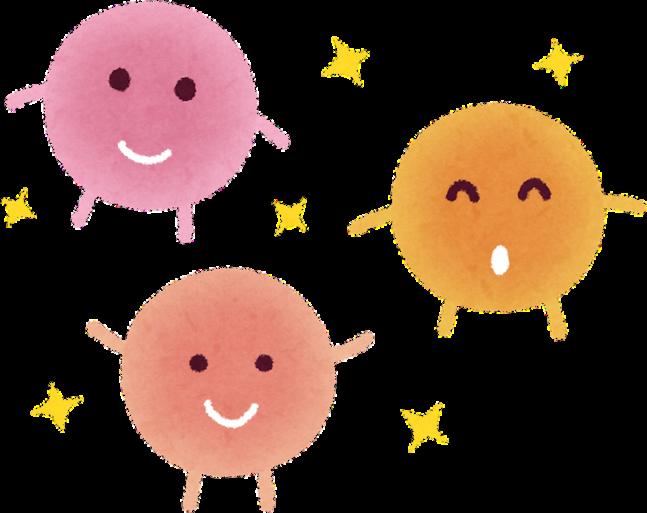
Probiotics flourish in the body and keep the balance of healthy bacteria by competing with pathogenic bacteria for adhesion sites, as well as improving the strength of the gut’s epithelial barrier and controlling the immune status of the gut as well. Prebiotics help contribute by increasing the production of short-chain fatty acids of probiotics which decreases the pH of the intestine and allows probiotics to colonize.
Dosage Forms
There are numerous dosage forms of Prebiotics and Probiotics. The most common forms are capsules, due to convenience. There are also tablets, gummies, suppositories, liquid drops, and powders. Foods, like yogurt, kefir, kombucha, miso, and cheese, contain probiotics and are also a very common way of obtaining these bacteria. Foods that contain prebiotics are many plant based foods high in fiber, such as bananas, almonds, whole grain wheat, and soy.
Dosing
The recommended dosing of probiotics is 10-20 biillion CFU (colony forming units) a day.
The recommended dosing of prebiotics if 3-5 grams a day.
Effectiveness
Depending on the type of prebiotic and probiotic a person is taking, many people see results within 1-2 weeks of starting regarding their digestion. Other improvements such as mood and gut inflammation can be seen in 4-8 weeks.
Side Effects
Warnings/Toxic Effects
Taking prebiotics and probiotics can come with an increased risk of infection. Also, the microorganisms in probiotics could create harmful substances, and also cause the host to form a resistance to antibiotics.
The most common side effect of prebiotics and probiotics is digestive issues. The increase of bacteria can cause gas and bloating. Other side effects include headaches, increase in histamine levels (allergy like symptoms), and some people who get their probiotics through foods such as yogurt and milk may have adverse reactions if they are lactose intolerant.
Author’s Opinion
I believe both products are worth taking. With minimal side effects and risks, I believe taking both prebiotics and probiotics could result in better health for many people. Digestive issues are very difficult to deal with, and with something as simple as changing one’s diet or taking a few supplements a day, I don’t see a downside for the average, healthy human, especially with the added benefit of possible mood improvement. For the immunocompromised, taking these would not likely be recommended due to the risk of infection. -A.
Ngo
References
Interactions
Probiotics can possibly interact with antibiotics, as well as antifungals such as ketoconazole, clotrimazole, and nystatin
Prebiotics can interact with chemotherapy drugs, immunosuppressants, diabetes medications, and heart medications
Article Summary
An article titled “Probiotics may help boost mood and cognitive function” written by Harvard Medical School, goes into detail on how probiotics can also improve mood, as well as the improved gut health already expected. They state that the gut is responsible for creating 90% of the body’s serotonin, a neurotransmitter used to regulate mood. This is why stressful situations can cause digestive issues, and why diseases such as IBS and Crohn’s disease can result in anxiety and depression. Although it is too early to determine the exact role of probiotics and mood, research is showing improvements in mental health with probiotics
1 Hutkins RW, Krumbeck JA, Bindels LB, et al Prebiotics: why definitions matter Current Opinion in Biotechnology 2016;37:1-7
doi:https://doi org/10 1016/j copbio 2015 09 001
2 Gasbarrini G, Bonvicini F, Gramenzi A Probiotics History Journal of Clinical Gastroenterology 2016;50:S116-S119 doi:https://doi org/10 1097/mcg 0000000000000697
3 OpenAthens / Sign in naturalmedicines-therapeuticresearch-com eu1 proxy openathens net Accessed February 24, 2024 https://naturalmedicinestherapeuticresearch-com eu1 proxy openathens net/databases/health-wellness/professional aspx?productid=1598
4 Bermudez-Brito M, Plaza-Díaz J, Muñoz-Quezada S, Gómez-Llorente C, Gil A Probiotic Mechanisms of Action Annals of Nutrition and Metabolism 2012;61(2):160-174 doi:https://doi org/10 1159/000342079
5. .Fleishman C. Probiotic Supplements: Delivery Formats. International Probiotics Association. Published June 10, 2021. Accessed February 20, 2024. https://internationalprobiotics org/home/supplement-formats/
6 Philadelphia TCH of Food as Medicine: Prebiotic Foods www chop edu Published December 21, 2022 Accessed February 20, 2024 https://www chop edu/health-resources/food-medicine-prebiotic-foods
7 Kligler B, Cohrssen A Probiotics American Family Physician 2008;78(9):1073-1078 Accessed February 23, 2024 https://www.aafp.org/pubs/afp/issues/2008/1101/p1073.html#:~:text=Typical%20dosages%20vary%20based%20on
8 Harvard Health Publishing Probiotics may help boost mood and cognitive function - Harvard Health Harvard Health Published 2019 Accessed February 23, 2024 https://www health harvard edu/mind-and-mood/probiotics-may-help-boost-mood-and-cognitive-function


 Author Gabriella Clark
Author Gabriella Clark
Title Biomedical Health Science student
Term Spring 2024
Common names SAMe, SAM-e1
Scientific name S-Adenosyl-L-Methionine2
Background SAM-e is reported to have been discovered in Italy in the 1950s. It was introduced into the United States in 1999 and is now sold as a dietary supplement.1
Common uses SAM-e is used in treating depression, pain, liver disease, and osteoarthritis.1
Pharmacology When SAM-e undergoes methylation, it can be used in the production of cell membranes, DNA, proteins, and neurotransmitters. Its effect on neurotransmitters is why it is commonly used to treat depression.2
Available forms
Dosage recommendations SAM-e is generally available in two forms: sulfate-p-toluene sulfonate and butane di-sulfonate, and it can be administered intravenously, orally, or intramuscularly.1 The dose of SAM-e that an individual takes may vary based on what they are trying to treat, but the daily intake should range from 400-1600 mg.1
1 . SAM-e Supplements: Do They Work for Depression? Dr. Axe. Accessed February 6, 2024.
2 Gao J, Cahill CM, Huang X, et al. S-Adenosyl Methionine and Transmethylation Pathways in Neuropsychiatric Diseases Throughout Life. Neurotherapeutics. 2018;15(1):156-175. doi:10.1007/s13311-017-0593-0
Effectiveness
Safety
Adverse effects & toxicity
Interactions
Article summary
While SAM-e may take as long as a couple weeks to produce an effect, it has less potential side effects than typical pain-relievers and may work just as well. SAMe may be effective in treating chronic health disorders, but the results are not conclusive.1
Those who are pregnant, breastfeeding, or suffer from bipolar disorder or a weakened immune system should avoid taking SAM-e as it may worsen the effects of these conditions.2
Adverse side effects of SAM-e usage are rare, but when taken in large dosages, it could cause nausea, upset stomach, dizziness, irritability, sweating, and insomnia.3
SAM-e can harmfully interact with SSRI medications commonly taken for anxiety, depression, and other mental health disorders.3
The article “S-Adenosylmethionine (SAMe) for Neuropsychiatric Disorders: A Clinician-Oriented Review of Research” was written by a group of doctors. In their studies, they showed that SAM-e was more effective than the placebo at reducing symptoms of depression in most cases. They also researched the effects SAM-e had on individuals suffering from psychotic disorders, liver disease, osteoarthritis, HIV, fibromyalgia, and cognitive decline such as dementia. Overall, they found evidence in favor of SAM-e being somewhat effective.4
Personal opinion
SAM-e is a supplement that many people may find to be beneficial to their health. However, it is always important to discuss it with a medical professional first.
~ Gabriella Clark
3 S-adenosyl-L-methionine (same): In depth. National Center for Complementary and Integrative Health. January 2017. Accessed February 24, 2024. https://www.nccih.nih.gov/health/sadenosyllmethionine-same-in-depth.
4 Sharma A, Gerbarg P, Bottiglieri T, et al. S-adenosylmethionine (same) for neuropsychiatric disorders: A clinician-oriented review of Research. The Journal of clinical psychiatry. June 2017. Accessed February 24, 2024. https://www.ncbi.nlm.nih.gov/pmc/articles/PMC5501081/.
2
Where Does Saw Palmetto Come From?
A shrublike palm native to the southeastern US. Back in the day, it was used for disorders regarding the reproductive organs and coughs caused by a wide range of diseases.
Scientific Names:
Serenoa repens
Serenoa serrulata
Sabal serrulata
Native tribes in Florida relied on the berries for food, but Europeans found the taste of the berries unpleasant. The berries were introduced to Western Medicine in the 1870s, are included in the US Pharmacopeia (USP) in 1906 and 1916, in the National Formulary from 1926-1950. 1 4 2
Common Uses
Urinary symptoms associated with an enlarged prostate gland (benign prostatic hyperplasia), chronic pelvic pain, migraine, hair loss. It has also been purposed to be used to increase appetite, increase libido, increase sperm production, build strength in tissues, increase metabolism, aid thyroid disorders, asthma, and PCOS. 4 1
SAWPALMETTO
Pharmacist
How Does Saw Palmetto Work?

Common Names:
Saw Palmetto
American Dwarf Palm Tree
Cabbage Palm
Inhibition of 5α-reductase I and II and inhibition of dihydrotestosterone (DHT) to the cytosolic androgen receptors. This results in anti-androgenic, anti-inflammatory, antiproliferative effects and significant binding of pharmacological receptors existing in the lower urinary tract. Saw palmetto consists of fatty acids, plant sterols, and flavonoids, high molecular weight polysaccharides (sugar) that may be the cause of the antiinflammatory properties as well as strengthening the immune system.3
Dosing
Saw Palmetto can come in different forms such as dried berries, powdered capsules, tablets, liquid tinctures (concentrated herbal extracts from soaking berries in alcohol or vinegar), and liposterolic extracts. The recommended daily dose of Saw Palmetto is 1-2 grams per day. However, if taken to supplement for BPH, the daily dose is 320 mg per day (can be taken as 160 mg twice daily).
3 4
C aseyCoronel-Student
SPRING 20 2 4
2 5
How Long Until Benefits Show Up?
It may take up to 8 weeks to see beneficial effects. There is conflicting evidence to determine the efficacy of treating BPH, but some studies show to help with common symptoms such as decreasing urinating frequency, difficult initiating and maintaining urination, and the urge for nocturia. 3
2
Side Effects
Usually rare and mild. These side effects can include constipation, decreased libido, diarrhea, headache, hypertension, nausea, urine retention, and pancreatitis.
Interactions3
It can cause enhancement to side effects to Finasteride, Antiplatelet and Anticoagulants (Warfarin, Clopidogrel, Aspirin). For Oral contraceptives and Hormonal Replacement Therapies, it may lead to decrease of efficacy and increase the risk of unplanned pregnancy or nonoptimal therapy.
Clinical Evidence2
Safety/Warning/Toxicities
Not recommended for the use of children due to possible effects on androgen and estrogen metabolism. Women may be able to use this but there are not enough studies to show evidence of adverse effects. It is best to avoid use in women who are pregnant and/or breastfeeding. 4 1
‘Pharmacological effects of saw palmetto extract in the lower urinary tract’ is a study that compares Saw Palmetto extract with medications that are used to treat lower urinary tract disorders such as Benign Prostatic Hyperplasia. Saw Palmetto reduced the upregulation of α1-adrenoreceptors in rat prostates induced by testosterone. Imbalance in hormones such as testosterone are one of the causations of BPH. Clinical trials that were conducted in men with BPH are being reviewed to verify if it will contribute the understanding Saw Palmetto extract for treatment of BPH and other lower urinary tract symptoms.
As my professional opinion, Saw Palmetto should not be used to self-treat without a discussion with a primary care provider. I recommend taking caution in those that were listed in the special population with side effects (women and children). But I see no harm being done if a patient does decide to take this supplement. C. Coronel
References:
5
Saw Palmetto. NCCIH. Published May 2020. https://www.nccih.nih.gov/health/saw-palmetto 1. Suzuki M, Ito Y, Fujino T, et al. Pharmacological effects of saw palmetto extract in the lower urinary tract. Acta Pharmacologica Sinica. 2009;30(3):271-281. doi:https://doi.org/10.1038/aps.2009.1 2. Saw palmetto Information | Mount Sinai - New York. Mount Sinai Health System. https://www.mountsinai.org/health-library/herb/saw-palmetto 3. Login. online.lexi.com. Accessed February 20, 2024. https://online.lexi.com/lco/action/doc/retrieve/docid/fc_rnp2/3750344? cesid=9xEMrZ9nvhg&searchUrl=%2Flco%2Faction%2Fsearch%3Fq%3Dsaw%2Bpalmetto%26t%3Dname% 26acs%3Dtrue%26acq%3Dsaw%2Bpal# 4. Serenoa repens. Treeworld Wholesale. https://www.treeworldwholesale.com/product/serenoa-repenssaw-palmetto/

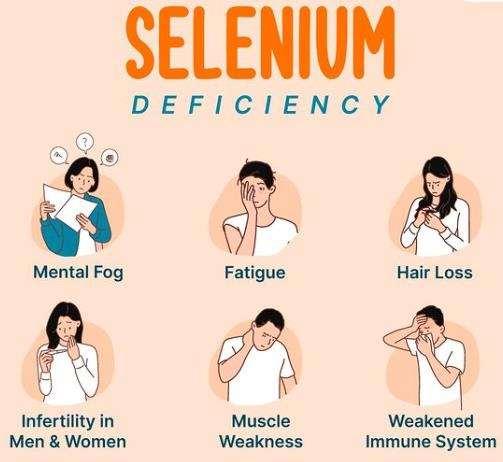
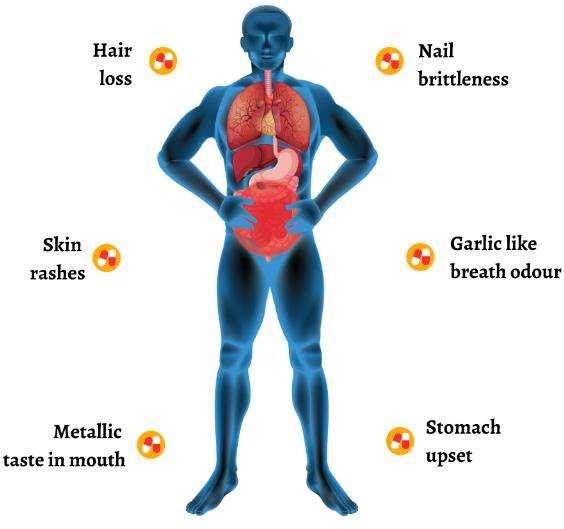
BACKGROUND & HISTORY
St. John’s Wort is an herbal remedy that has been used since the Middle Ages, known for its anti-inflammatory and healing properties. Dating back to 1633, it was used topically for burns, and an oil extract from the plants flowers was taken orally for anxiety. The oil extract was also applied externally for inflammation and healing.
St. John’s Wort is not regulated by the Food and Drug Administration, but it is commonly used as a dietary supplement in Western countries. It is commonly used to treat depression and symptoms of menopause.
COMMON USES
Depression
Menopausal Symptoms
Somatic Symptom Disorder
COMMON NAMES
Klamath weed
goatweed
hypericum
Amber touch-and-heal
Esbericum
psychotonin
John’s wort
St. John’s Wort
Hypericum perforatum
Ainsley Rodrick, Student Pharmacist
Spring 2024
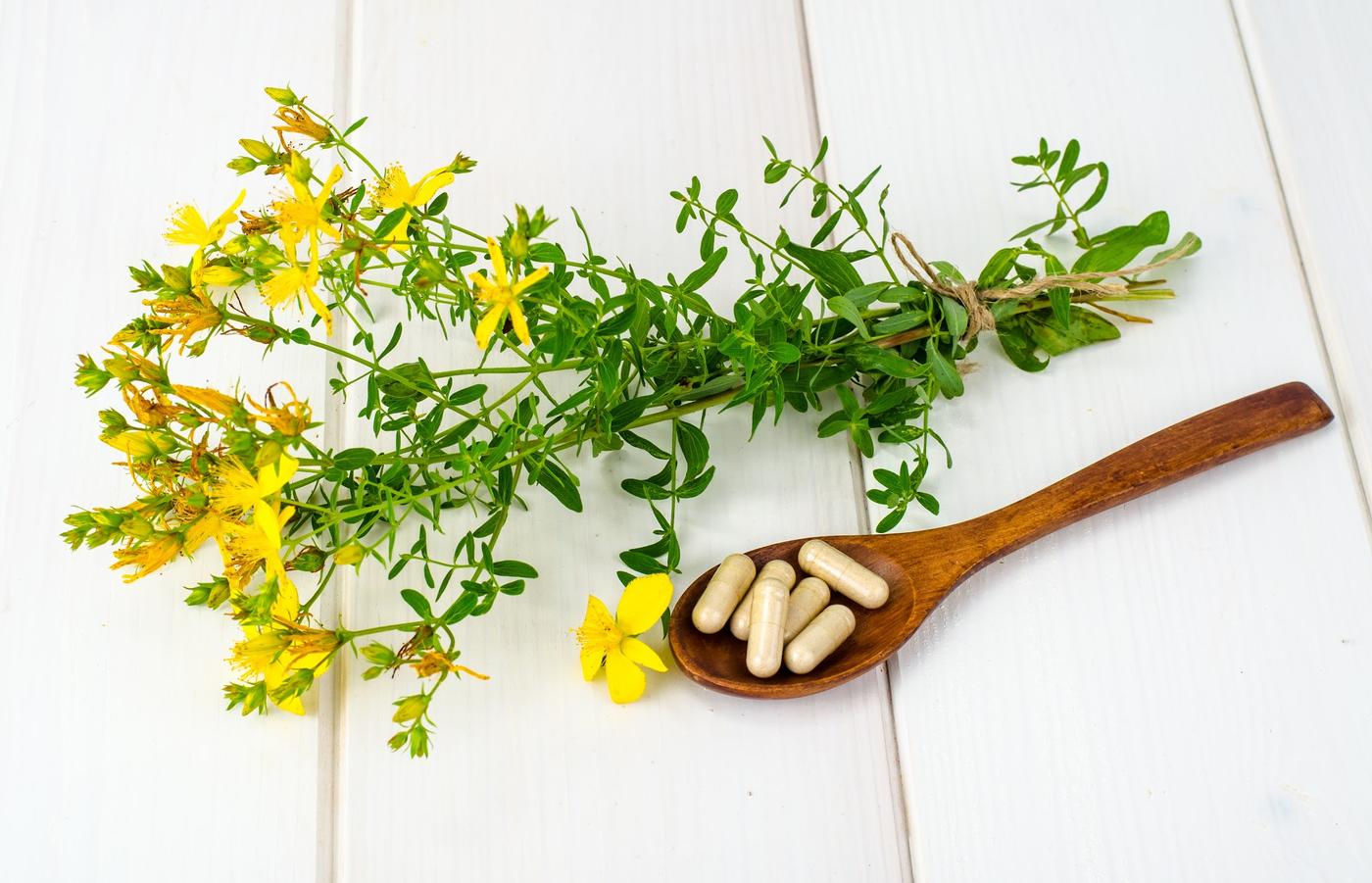
https://www.healthygreenathlete.com/wp-content/uploads/2023/10/supplements-for-post-workout-recovery.jpg
DOSING
Depression:
900mg of extract daily in 3 divided doses for periods of up to 12 weeks.
Skin Conditions:
Topical cream containing hypericin 1% and 1.5%
DOSAGE FORMS
Capsules
Tablets
Liquids
Tea bags
Gummies
Lozenges
Oral bioavailabilty of St. John’s Wort is approximately 15-20%. Only 5% of the hypericin is likely to penetrate the blood brain barrier. The half life of hypericum is a few weeks. Time to peak plasma levels are 30 minutes to 3 hours for psuedohypericin, 4.6 hours to 8.1 hours for hypericin, and 2.8 to 3.6 hours for hyperforin at single doses of St. John’s Wort. Steady state levels are reached at 4 days with hypericin. Psuedohypericin, hypericin, and hyperforin are structurally similar components of St. John’s Wort with pharmacokinetic differences.

PHARMACOLOGY
https://www garden ngknowhow com/wp-content/up oads/2014/04/stjohns-wort-p cture- d512830983-1536x1152 jpg
DRUG INTERACTIONS
St. John’s Wort has many drug interactions. Listed are drugs with major interactions with St. John’s Wort. It is shown that St. John’s Wort can interact with other drugs in dangerous ways.
St. John’s Wort is generally well tolerated. Some common side effects are diarrhea, dizziness, dry mouth, gastrointestinal discomfort (mild), fatigue, headache, insomnia, restlessness, and sedation. Some topical adverse effects are skin rash and photodermatitis. Alprazolam
Contraceptive Drugs
Cyclosporine
Cytochrome P450
Substrates
Digoxin
Docetaxel
Imatinib
Ketamine
Omeprazole
Oxycodone
P-glycoprotein
substrates
Phenobarbital
Phenytoin
Protease
Inhibitors
Rivaroxaban
Tacrolimus
Warfarin
SAFETY WARNINGS & TOXICITIES
St. John’s Wort is considered likely safe when used orally and appropriately. When taken orally for at least 12 weeks, it has been shown to be safe, but due to its extensive drug interaction list, it is likely to not be safe for people that take prescription drugs. It is not safe to take St. John’s Wort with antidepressants or drugs that affect serotonin. It is also not safe to use during preganancy or breastfeeding.
SIDE EFFECTS PROFESSIONAL OPINION
EFFECTIVENESS
When used appropriately and orally, St. John’s Wort has been found to be effective for depression symptoms. The supplement must be taken orally for at least 12 weeks, and it is effective when it is taken without drugs that interact with its ingredients.
SUMMARY OF STUDY
The study compared the use of St. John‘s Wort, SJW, to the use of antidepressants in depression. Researchers found statistically significant results that SJW reduced the number of depressive patients and Hamilton Depression Rating Scale while having fewer side effects and risks than conventional SSRI medications.
In my professional opinion, I do not think that St. John‘s Wort should be used without consultation from a doctor. Due to its extensive list of drug interactions, it is highly likely to interact with a substance a patient may be using or consuming. In order for the best patient outcomes, I think it is best to work with your doctor to figure out if St. John‘s Wort is an option. Besides its extensive drug interaction list, St. John‘s Wort has been shown to be effective, so I think it could be an option when it is deemed appropriate.
A Rodrick
REFERENCES
NATMED Pro. NatMed Pro. Accessed February 23, 2024.
https://naturalmedicines.therapeuticresearch.com/.
St John’s Wort. Natural Products. Lexicomp. Wolters Kluwer Health, Inc. Riverwoods, IL. Accessed February 23, 2024 http://online lexi com
St John’s Wort National Center for Complementary and Integrative Health Accessed February 23, 2024
https://www nccih nih gov/health/st-johns-wort
Zhao X, Zhang H, Wu Y, Yu C The efficacy and safety of St John's wort extract in depression therapy compared to SSRIs in adults: A meta-analysis of randomized clinical trials. Adv Clin Exp Med. 2023 Feb;32(2):151-161. doi: 10.17219/acem/152942. PMID: 36226689.
STEVIA
AMANDA READER, STUDENT PHARMACIST
SPRING
2024
WHAT IS STEVIA?
Stevia is a natural sweetener often used in place of sugar. It is extracted from a plant native to South America and has been used for over 200 years. The first scientific recording of the plant was in 1899 by Moises Santiago de Bertoni, who called it Eupatorium rebaudianum. A few years later, it was redefined as a member of the sunflower family under the name Stevia rebaudiana. Its early usage was to sweeten teas and medicines, and the leaves were chewed as a sweet treat. The chemical extract more commonly used today first became commercially available in Japan in the 1970s. Today, stevia is produced in the Unites States, China, Kenya, Paraguay, and in many other parts of the world.1 It is used for a variety of medical conditions, including diabetes, high blood pressure, and obesity.2 It is often used as a dietary supplement, for adults and children, for weight control since it contains no sugar and nearly zero calories.1
HOW CAN STEVIA BE USED?
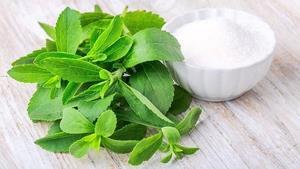
https://www.trishnnatea.com/products/stevialeaves-natural
Stevia extract is available in many different forms, which can be selected for ease of use and extent of sweetness. Stevia cannot be exchanged with sugar in equivalent amounts because stevia sweeteners can be anywhere from 200-300 times sweeter than regular sugar. This means that 25g of sugar can be replaced by 80-125mg of stevia.2 The most natural, unrefined form of stevia is a fresh leaf from a stevia plant, but this form is only usable if chewed. Dried leaves can be used to sweeten beverages, and the drying process offers a more potent sweetness than fresh leaves. For more practical or versatile uses of stevia, the leaves must undergo an extraction process. Stevia extract typically takes the form of a white powder or a liquid. As a sweetener, stevia can be added to foods or beverages as needed to achieve desired sweetness. Stevia extract is particularly sweet and should be used by the pinch if using powder, or by the drop if using liquid.3 For larger dosage requirements, an approximate conversion may be used: ¼ tsp of ground stevia leaves is approximately equivalent to 1 tsp of sugar. Daily intake of stevia should not exceed 4 mg/kg of body weight.2
The chemical extract of stevia, steviol glycosides, is hydrolyzed in the colon, where gut bacteria remove the glucose units until only the backbone, steviol, remains. Steviol is metabolized in the liver to steviol glucuronide, which can then be excreted in the urine. Stevia and its by-products pass through the body during metabolism and do not accumulate anywhere in the body. Stevia is considered a zero-calorie compound because the energy released during fermentation of the glucose units is small enough to be considered insignificant.1
IS STEVIA SAFE TO USE?
Stevia can be used by adults and children to reduce sugar intake. The FDA classifies steviol glycosides as generally regarded as safe (GRAS), although stevia leaves and pure extract do not have this status. Stevia
should not be used by women who are pregnant or breastfeeding as there is insufficient data to indicate its safety.2 Most adverse effects are minor and resolve within the first week of use. The most common side effects are abdominal bloating, dizziness, headache, myalgia, nausea, and numbness. A serious but rare adverse effect is an allergic reaction.4
Stevia has several drug interactions. Stevia should not be used with OAT3 inhibitors, such as diclofenac, telmisartan, quercetin, and mulberrin, as these drugs may interfere with the body’s ability to eliminate stevia from the kidneys.2 Stevia also has a moderate interaction with lithium. There is also a small chance of an interaction with antidiabetes or antihypertensive drugs, as stevia could increase the risk of hypoglycemia with antidiabetes agents and increase the risk of hypotension with antihypertensive agents.4
DOES IT WORK? WHAT DO STUDIES SAY?
Stevia is often used by patients with diabetes, hypertension, and obesity as a means to combat these conditions. Stevia is particularly sought after for its antidiabetic effects. While a great deal of animal studies exist, adequate human data in this condition is lacking. For example, Ahmad et al. referenced a number of studies in rats in which stevioside extracted from a stevia plant lowered glucose levels in both Type I and Type II diabetic rats. It was concluded that stevioside achieved glucose regulation by enhancing insulin secretion and by decreasing expression of an enzyme involved in gluconeogenesis. Another study pre-fed some rats stevia leaves prior to injecting them with a diabetogen, and these rats showed less severe diabetic symptoms, including lessened hyperglycemia, compared to rats that were not pre-fed stevia leaves.5
References
1. Ashwell M. Stevia, Nature's Zero-Calorie Sustainable Sweetener. Nutr Today. 2015;50(3):129134. doi:10.1097/NT.0000000000000094
2. Stevia. Natural Products Database. Lexicomp. Wolters Kluwer Health, Inc. Riverwoods, IL. Accessed February 22, 2024. http://online.lexi.com
3. Varieties of Stevia. Stevia.Net. Accessed February 22, 2024. https://www.stevia.net/varieties.htm
However, studies in humans are few in number and offer conflicting results. Ahmed et al cited a 2016 study in which diabetic patients were either part of a control group or were given stevia leaf powder. In this study, the patients who consumed stevia leaf powder for 60 days had lower fasting and postprandial glucose levels than the control group, although it is not clear how much stevia leaf powder was consumed every day to achieve this effect. Some more recent studies indicated that stevia had no effect on blood glucose levels compared to the control group. Stevia cannot be confirmed as an antidiabetic agent unless further studies proving its effectiveness are conducted.5
In my opinion, the only thing that Stevia can reasonably be used for is to replace sugar in one’s diet. There is little clinical evidence for the effectiveness of Stevia as a treatment of any health condition. ~A. Reader
4. Stevia. NatMed Pro. Natural Medicines Comprehensive Database. Stockton, CA. Accessed February, 22, 2024. https://naturalmedicinestherapeuticresearch-com.eu1.proxy. openathens.net/databases/food,-herbssupplements/professional.aspx?productid=682
5. Ahmad J, Khan I, Blundell R, et al. Stevia rebaudiana Bertoni: An updated review of its health benefits, industrial applications, and safety. Trends in Food Science & Technology. 2020; 100:177-189. https://doi.org/10.1016/j.tifs.2020.04.030
Common Names
•Curcumin
•Aromatica
•Haldi
•Manjal
Turmeric
Scientific Name: Curcuma Longa
Grace Ramey, Student Pharmacist Spring 2024
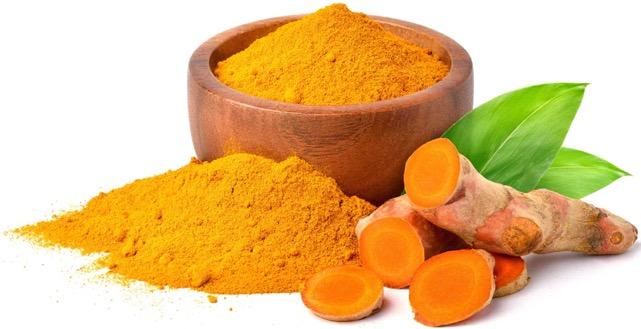
https://www.znaturalfoods.com
Common Uses
•Rheumatoid arthritis
•Digestive disorders
•Conjunctivitis
•Skin cancer
•UTI
•Small pox
•Chicken pox
•Wound healing
Typical Doses
500-2,000 mg/day
Mechanism of Action
Turmeric reduces inflammation by lowering histamine levels and possibly increasing cortisol production in the body from adrenal glands.
Background/History
•Comes from a ginger-like plant mainly grown in India
•Used as a spice, coloring agent, cosmetic, and medicine
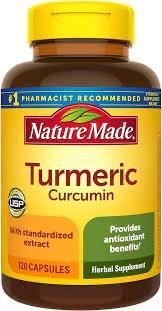
https://www.amazon.com
Dosage Forms
•Supplements
•Spice
•Tea
-Best consumed with food
-Supplements have much higher conc. than spice/tea
Side Effects
- Side effects found if taking high concentrations of the supplement (pills, gummies, or capsules)
- If allergic, can cause hives, a rash, or abdominal pain
Effectiveness
Turmeric has been proven to work as anti-inflammatory agent. Many research studies have taken place in animals or test tubes. Turmeric may not work in well as humans as animals. Exact data was not recorded.
Article Summary
In a study done at John Hopkins, osteoarthritis patients reported less pain when simply adding turmeric to their diet. Not enough research has been done to prove if turmeric benefits mood disorders.
Safety Warnings/Toxicities
- Turmeric increases risk of kidney stones
- Not absorbed by body well (could have risky effects)
Food/Drug Interactions
- Can lessen effect of pain relievers - Should NOT be taken with chemotherapy - Can increase risk of bleeding with warfarin - Can increase side effects with tacrolimus
Professional Opinion
In my opinion, I think this research shows that turmeric would be a good alternative medication to take to treat inflammation. It should be taken with food to increase absorption. – G. Ramey
Prasad S. Turmeric, the golden spice. Herbal Medicine: Biomolecular and Clinical Aspects. 2nd edition. January 1, 1970. Accessed February 22, 2024. https://www.ncbi.nlm.nih.gov/books/NBK92752/#:~:text=In%20North%20India%2C%20turmeric%20is,used%20in%20ancient%20Tamil%20literature. Turmeric. Turmeric - an overview | ScienceDirect Topics. Accessed February 22, 2024. https://www.sciencedirect.com/topics/neuroscience/turmeric#:~:text=Turmeric%20is%20also%20called%20curcumin,antithrombotic%2C%20and%20cardiovascular%20protective %20effects. Turmeric botanical name. Accessed February 22, 2024. https://kvk.icar.gov.in/API/Content/PPupload/k0331_69.pdf. MS MM. How much turmeric should you take per day? Healthline. January 13, 2023. Accessed February 22, 2024. https://www.healthline.com/nutrition/turmericdosage#:~:text=Studies%20typically%20use%20doses%20of,amounts%20naturally%20occurring%20in%20foods. Turmeric benefits. Johns Hopkins Medicine. December 15, 2022. Accessed February 22, 2024. https://www.hopkinsmedicine.org/health/wellness-and-prevention/turmeric-benefits. Turmeric. National Center for Complementary and Integrative Health. Accessed February 22, 2024. https://www.nccih.nih.gov/health/turmeric#:~:text=In%20India%2C%20it%20was%20traditionally,%2C%20depression%2C%20and%20many%20others.
R
f
e
e
e
e r
n c
s

























 Student Pharmacist
Student Pharmacist

















































































































 JeffreyDu StudentPharmacist
JeffreyDu StudentPharmacist




























































 1. Kava kava root - grown without chemicals. Pacific Botanicals. Accessed April 7, 2024.
1. Kava kava root - grown without chemicals. Pacific Botanicals. Accessed April 7, 2024.








 Author Gabriella Clark
Author Gabriella Clark








